Forums
- Forums
- Axis And Allies Forum
- General Discussion
- Aviation News
Aviation News
Post a reply
- Go to Previous topic
- Go to Next topic
- Go to Welcome
- Go to Introduce Yourself
- Go to General Discussion
- Go to Screenshots, Images and Videos
- Go to Off topic
- Go to Works in Progress
- Go to Skinning Tips / Tutorials
- Go to Skin Requests
- Go to IJAAF Library
- Go to Luftwaffe Library
- Go to RAF Library
- Go to USAAF / USN Library
- Go to Misc Library
- Go to The Ops Room
- Go to Made in Germany
- Go to Campaigns and Missions
- Go to Works in Progress
- Go to Juri's Air-Raid Shelter
- Go to Campaigns and Missions
- Go to Works in Progress
- Go to Skinpacks
- Go to External Projects Discussion
- Go to Books & Resources
-
10 years agoTue Dec 09 2014, 07:27pm
 Main Admin?Dubai, UAE, December 8, 2014 ? Embraer and FlightSafety International completed the training of the first class of pilots for the new Legacy 500 executive jet. These pilots, trained to operate customer jets, benefited from the complete customer support and services structure with advanced training technology. The simulator was qualified as Level C by the FAA (Federal Aviation Administration) and by Brazil?s ANAC (Ag?ncia Nacional de Avia??o Civil).
Main Admin?Dubai, UAE, December 8, 2014 ? Embraer and FlightSafety International completed the training of the first class of pilots for the new Legacy 500 executive jet. These pilots, trained to operate customer jets, benefited from the complete customer support and services structure with advanced training technology. The simulator was qualified as Level C by the FAA (Federal Aviation Administration) and by Brazil?s ANAC (Ag?ncia Nacional de Avia??o Civil).
?Well before the entry into service of the Legacy 500, we built out a global support network for our customers,? said Edson Carlos Mallaco, Vice President, Customer Support and Services, Embraer Executive Jets. ?Our solid partnership with FlightSafety International resulted in the joint development of a complete high-level training solution.?
Training is being conducted at FlightSafety International, in St. Louis, Missouri in the U.S. FlightSafety International is also Embraer?s training service provider for Legacy and Lineage executive jets, in addition to the E-Jets commercial aircraft.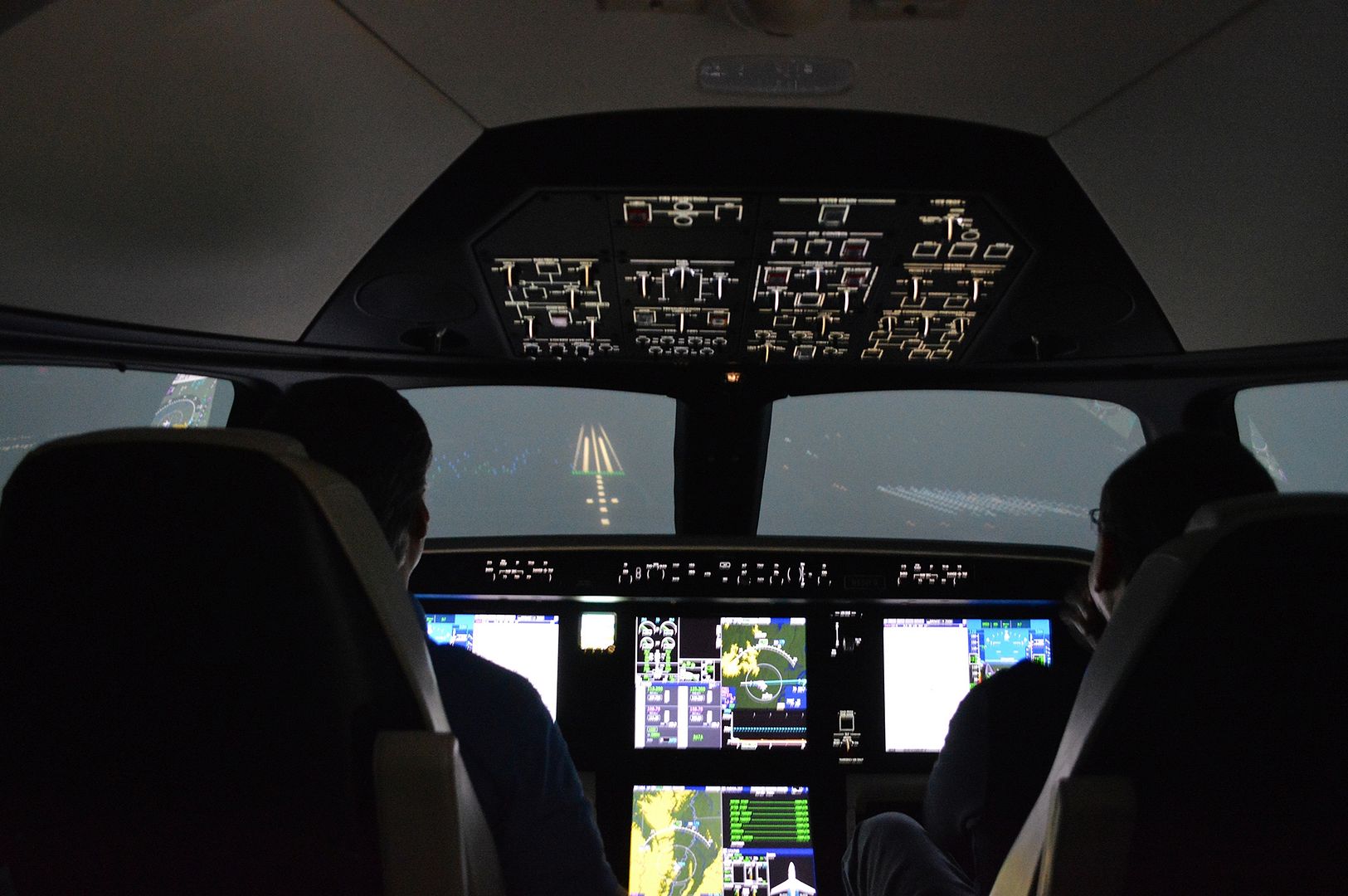
That would be cool to have at home
Below the real deal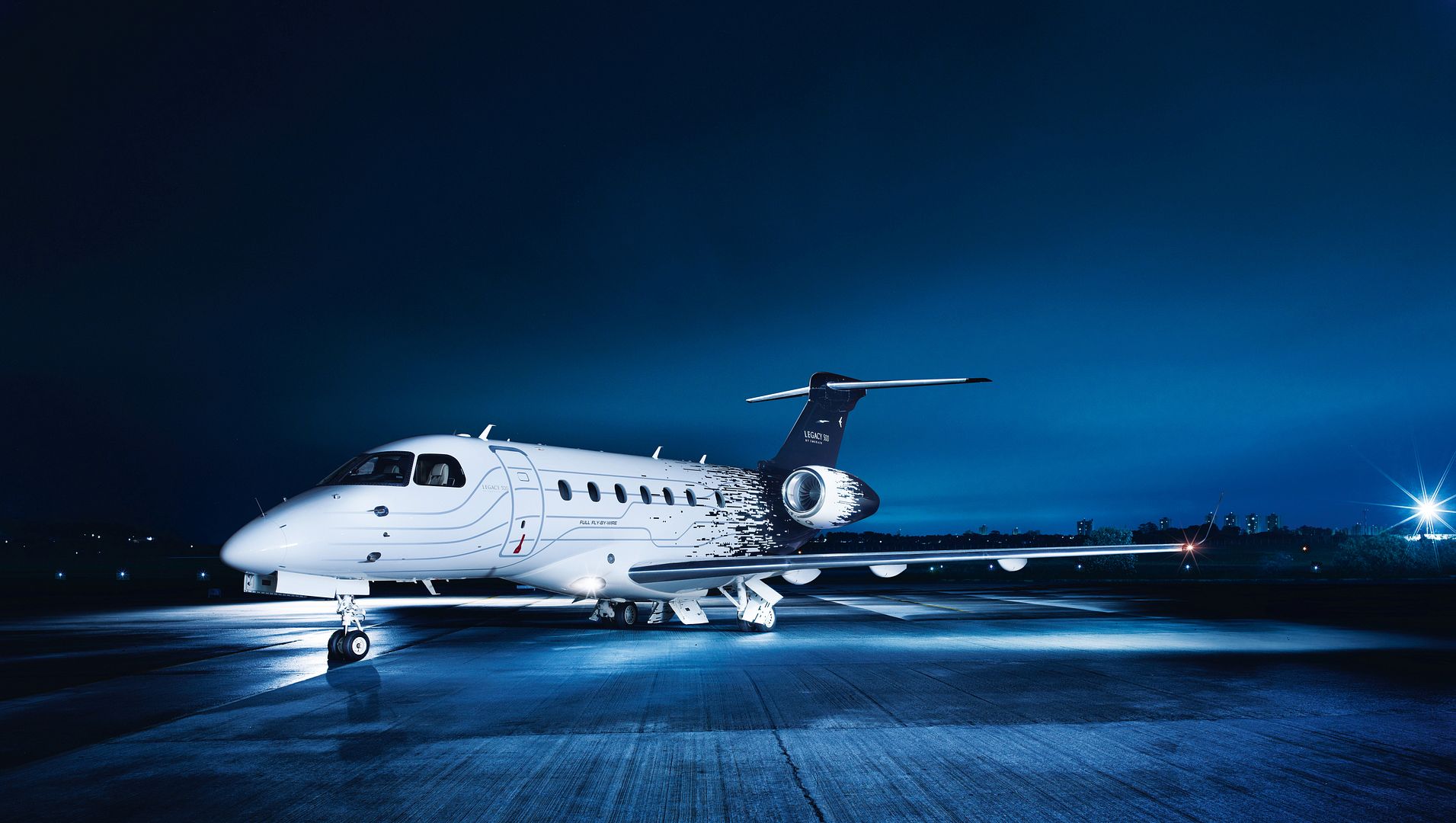
Royal Air Force squadrons will deploy to the United States in January at the top of their game thanks to Tartan Flag, a training exercise designed to prepare RAF personnel for Exercise Red Flag, the most demanding, challenging and tactically complex air warfighting training anywhere in the world.
In the New Year the Typhoon Force led by 1 (Fighter) Squadron will join V (Army Cooperation) Squadron flying the Sentinel R1 and 8 Squadron flying the E-3D at Nellis Air Force Base, Nevada for three weeks of highly intensive training.
Officer Commanding 1(F) Sqn Wg Cdr Mike Sutton said: ?In order to get ourselves into good shape for Red Flag we're running a work-up period of training here at RAF Lossiemouth called Tartan Flag. The exercise involves up to 20 fast jets conducting the most challenging, high-end training sorties that we can generate in the UK. We're also fighting against a number of simulated threat aircraft, again up to about 20 in number, also using the Sentinel and E-3D from RAF Waddington and we're doing air-air refuelling on a daily basis.?
The exercise is not limited to air-to-air sorties, the Typhoon Force is exercising its swing role capability as Wg Cdr Sutton explained: ?Red Flag is predominately a swing role training opportunity for us. By swing role we're taking the Typhoon and employing it in the air-air and then the air-ground role in the same sortie; we can flick between the two at a second's notice.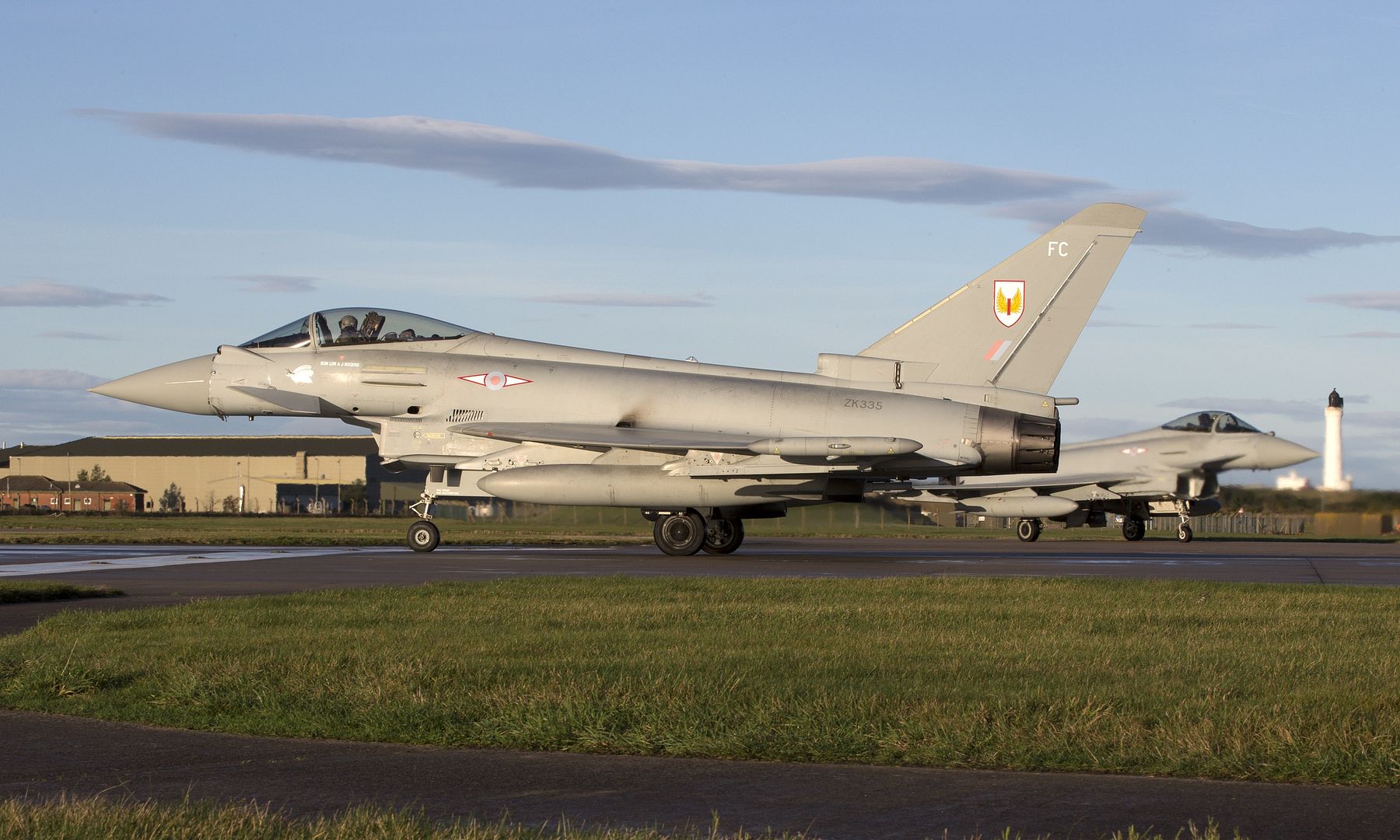

-
10 years agoWed Dec 10 2014, 02:25pm
 Main AdminPALMDALE, Calif. ? Dec. 10, 2014 ? Northrop Grumman Corporation (NYSE:NOC) has completed ? on budget and on schedule ? the center fuselage for the first F-35 Lightning II aircraft to be ordered by Norway, a conventional takeoff and landing (CTOL) variant designated AM-1.
Main AdminPALMDALE, Calif. ? Dec. 10, 2014 ? Northrop Grumman Corporation (NYSE:NOC) has completed ? on budget and on schedule ? the center fuselage for the first F-35 Lightning II aircraft to be ordered by Norway, a conventional takeoff and landing (CTOL) variant designated AM-1.
The company celebrated the production milestone with a brief ceremony Dec. 4 at its Palmdale Aircraft Integration Center of Excellence, the site of its F-35 Integrated Assembly Line (IAL). Royal Norwegian Air Force Col. Odd-Steiner Haugen, the Norwegian national deputy in the F-35 joint program office, attended the ceremony on behalf of the Norwegian government.
"Today's event marks another key delivery on the F-35 team's promise to produce a fifth-generation, multirole fighter that can meet the common air combat requirements of the U.S. and its allies," said Brian Chappel, vice president and F-35 program manager, Northrop Grumman Aerospace Systems. "Using our Integrated Assembly Line, we're continuing to reduce the time and cost required to produce an F-35 center fuselage. Our success is helping the industry team meet the operational need dates of our international partners."
The center fuselage is the core structure around which every F-35 joint strike fighter aircraft is built. As a principal member of the Lockheed Martin-led F-35 industry team, Northrop Grumman designed and produces the center fuselage for all three F-35 variants: CTOL, short takeoff vertical landing (STOVL) and the carrier variant (CV).
The AM-1 center fuselage is the first of 52 center fuselages that Northrop Grumman will produce for Norway. It is the 166th center fuselage that the company has produced at its Palmdale site, and the 34th such unit delivered to Lockheed Martin this year.
Lockheed Martin Aeronautics will perform final assembly and checkout of the Norwegian F-35s in Fort Worth, Texas. The process includes mating the center fuselage to the forward fuselage/cockpit and wings produced by Lockheed Martin, and the aft fuselage and empennage produced by BAE Systems.
The IAL is a highly automated set of work cells developed to assemble ? efficiently, affordably and with high precision ? the center fuselage for all three variants of the F-35 joint strike fighter. It occupies more than 200,000 square feet of factory floor space and includes more than 700 tools required to operate 78 positions.
Northrop Grumman plays a key role in the development and production of the F-35 weapons system. In addition to producing the jet's center fuselage, the company produces key F-35 radar, electro-optical, avionics and communications subsystems. It also develops mission systems and mission-planning software; develops and maintains pilot and maintainer training systems courseware; and manages the team's use, support and maintenance of low-observable technologies.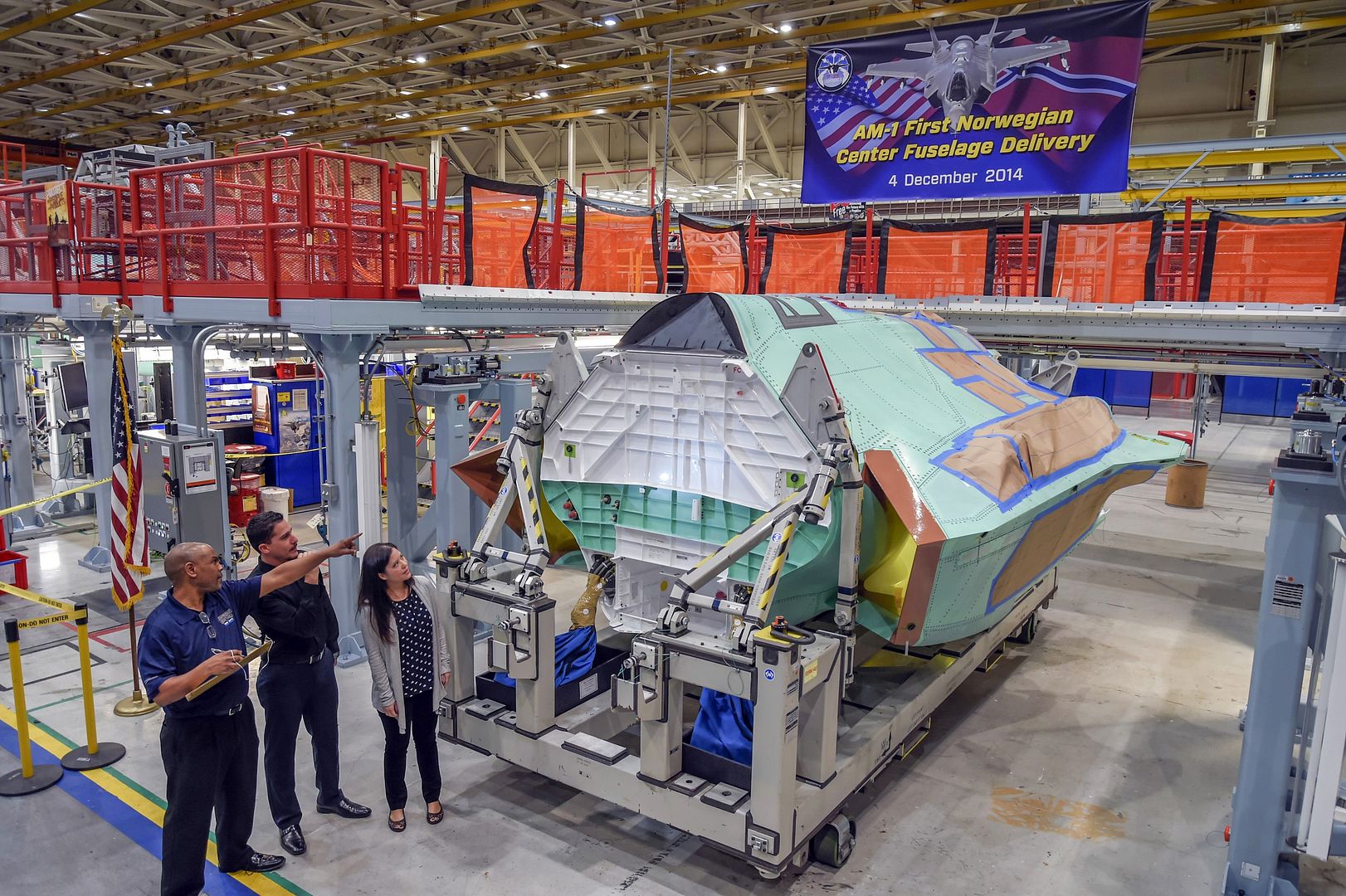

San Diego, California, Dec. 9, 2014 ? Engineers are getting their first look at the Lockheed Martin [NYSE:LMT]-built Orion spacecraft following its successful flight test and recovery on Dec. 5. With the spacecraft recovered from the Pacific and brought to port in San Diego, technical teams are examining flight data recorders and samples of the heat shield to learn as much as possible about the performance of key systems during the test.
?The 1,200 on-board sensors will provide us an ocean of information about everything from the effects of space radiation on our avionics to the environment inside the crew cabin,? said Mike Hawes, Lockheed Martin vice president and Orion program manager. ?What we learn from this flight will improve Orion?s designs and technology, and help us make future vehicles the best they can be.?
In San Diego engineers have removed samples of the heat shield to examine its performance and ablation rates during re-entry. The samples, along with select data recorders, will be brought to nearby Lockheed Martin facilities for processing. This analysis will help the technical team get a head start in determining how to optimize the development of future heat shields.
Orion will be loaded on a special truck for an estimated two-week trip across the country to Kennedy Space Center in Florida, where NASA and Lockheed Martin engineers will disassemble it and thoroughly examine its structure, computers and instrumentation. In March, as part of the Exploration Flight Test-1 (EFT-1) contract, Lockheed Martin will provide a complete data analysis report to NASA which includes information about the vehicle?s performance and recommendations based on the results.
The EFT-1 crew module will next be used for Ascent Abort Test 2, which is a test of the launch abort system. Orion?s launch abort system is equipped with three powerful motors capable of pulling the capsule and crew a mile up and a mile away from an emergency on the launch pad.
In addition, the Orion team has already begun procuring parts and manufacturing primary structures for the next spacecraft, which will be flown on the upcoming Exploration Mission-1 atop the powerful Space Launch System.
A Greek F-16 jet takes off on December 9, 2014 at the Ovda airbase in the Negev Desert near Eilat, southern Israel. Israel and Greece concluded a Joint Air Forces drill during the joint IDF-Hellenic Air Force drill week. On Sunday, official Syrian media reported that Israeli jets had bombed targets near Damascus International Airport and in the town of Dimas, north of Damascus and near the border with Lebanon.
Israeli F-16 jet's take off on December 9, 2014 at the Ovda airbase in the Negev Desert near Eilat, southern Israel. Israel and Greece concluded a Joint Air Forces drill during the joint IDF-Hellenic Air Force drill week. On Sunday, official Syrian media reported that Israeli jets had bombed targets near Damascus International Airport and in the town of Dimas, north of Damascus and near the border with Lebanon.
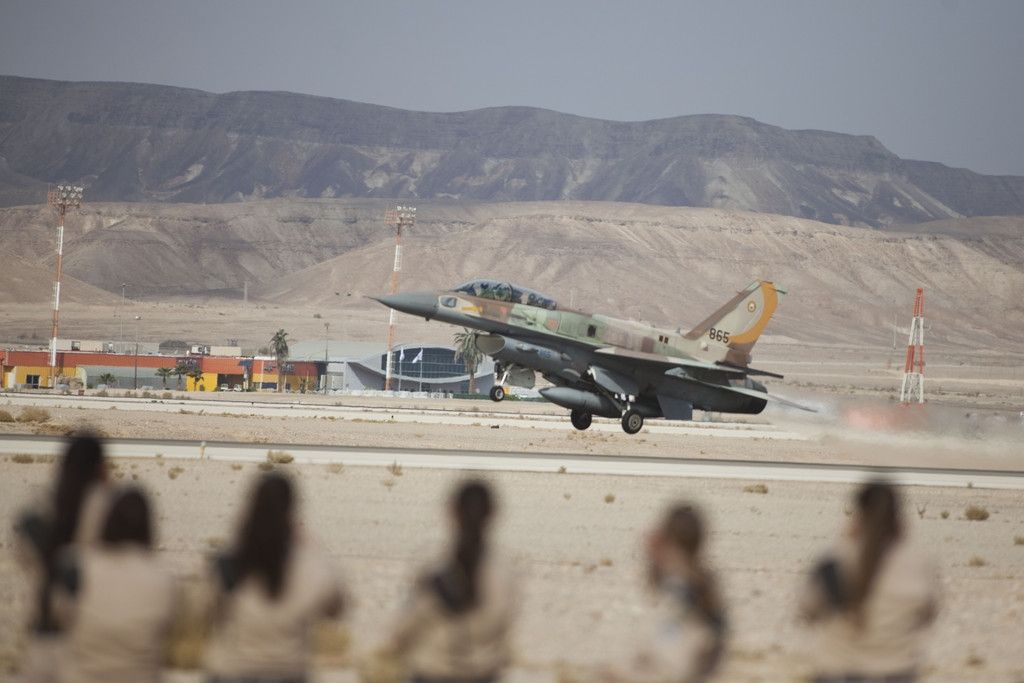
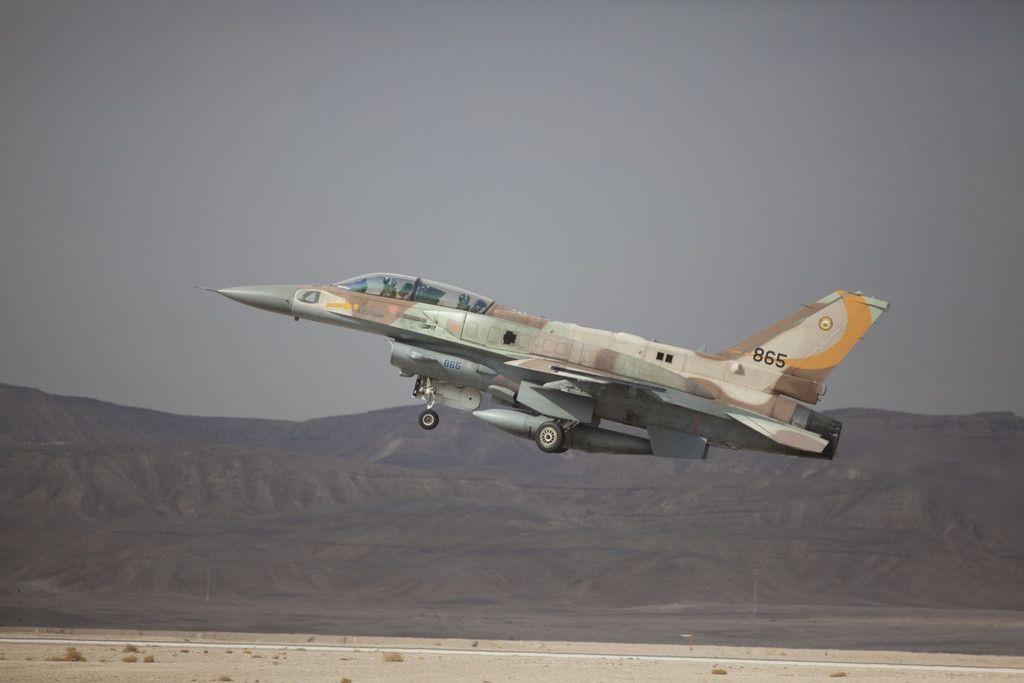
-
10 years ago
 Main Admin
Main Admin
Moscow, December 10. A batch of aircraft was transferred two days ago at the Novosibirsk branch of the Sukhoi Company ? V.P.Chkalov Novosibirsk Aircraft Plant in the presence of the Governor of the Novosibirsk Region Mr. Vladimir Gorodetsky and Novosibirsk Mayor Mr. Anatoly Lokot. Today the frontline bombers made a flight to the place of their deployment in one of the air units in the south of Russia.
The Novosibirsk branch of the Sukhoi Company ? Novosibirsk Aircraft Plant currently operates at its maximum capacity. The State contract with the Ministry of Defense for supplies of the Su-34s to the Air Force till the year of 2020 provides a stable work load for the near future and determines its long-term development. The aircraft have been used successfully in the armed forces and demonstrated a high performance.
The bombers were delivered on the State contract for a large batch of Su-34s signed in 2012. The previous five-year contract for the Su-34s, signed in 2008, was completed last December. Those are the largest contracts for the supply of combat aircraft, provided by the State Armament Program for the years of 2011-2020.
The Su-34 features, in particular, are: an increased flight range of up to 4,000 km, a top speed of up to 1900 km/h, a combat payload of up to 8 tons. The aircraft is equipped with the latest weapon system and air?refueling system.
MARIETTA, Ga., Dec. 11, 2014 ? The Republic of Tunisia received its second C-130J Super Hercules during a ceremony today at the Lockheed Martin [NYSE: LMT] facility here.
Tunisia received its first C-130J in April 2013, marking the first delivery of a J-model to an African nation. Lockheed Martin signed a contract in 2010 with Tunisia to deliver two C-130Js, as well as to provide training and an initial three years of logistics support.
?Tunisia?s Super Hercules fleet is both a national and a regional asset, able to support more missions than any other aircraft in operation today,? said George Shultz, vice president and general manager, C-130 Programs, Lockheed Martin Aeronautics. ?We are proud to have Tunisia as a member of the global C-130J family. As legacy operators, Tunisian Air Force crews have long showcased why the C-130 is the world?s most versatile aircraft and continue to do so with its C-130J fleet.?
Tunisia?s new C-130Js are the longer fuselage or ?stretched? variant of the aircraft. Tunisia?s new C-130Js will support operations across the mission spectrum, including relief efforts around the world, firefighting and traditional airlift sorties.
Sixteen countries have chosen the C-130J Super Hercules to meet their air mobility needs. The C-130J is the standard by which all other airlifters are measured in terms of availability, flexibility and reliability. With more than 1.2 million flight hours to date, the C-130J is available in nine variants and offers operators 17 different mission configurations.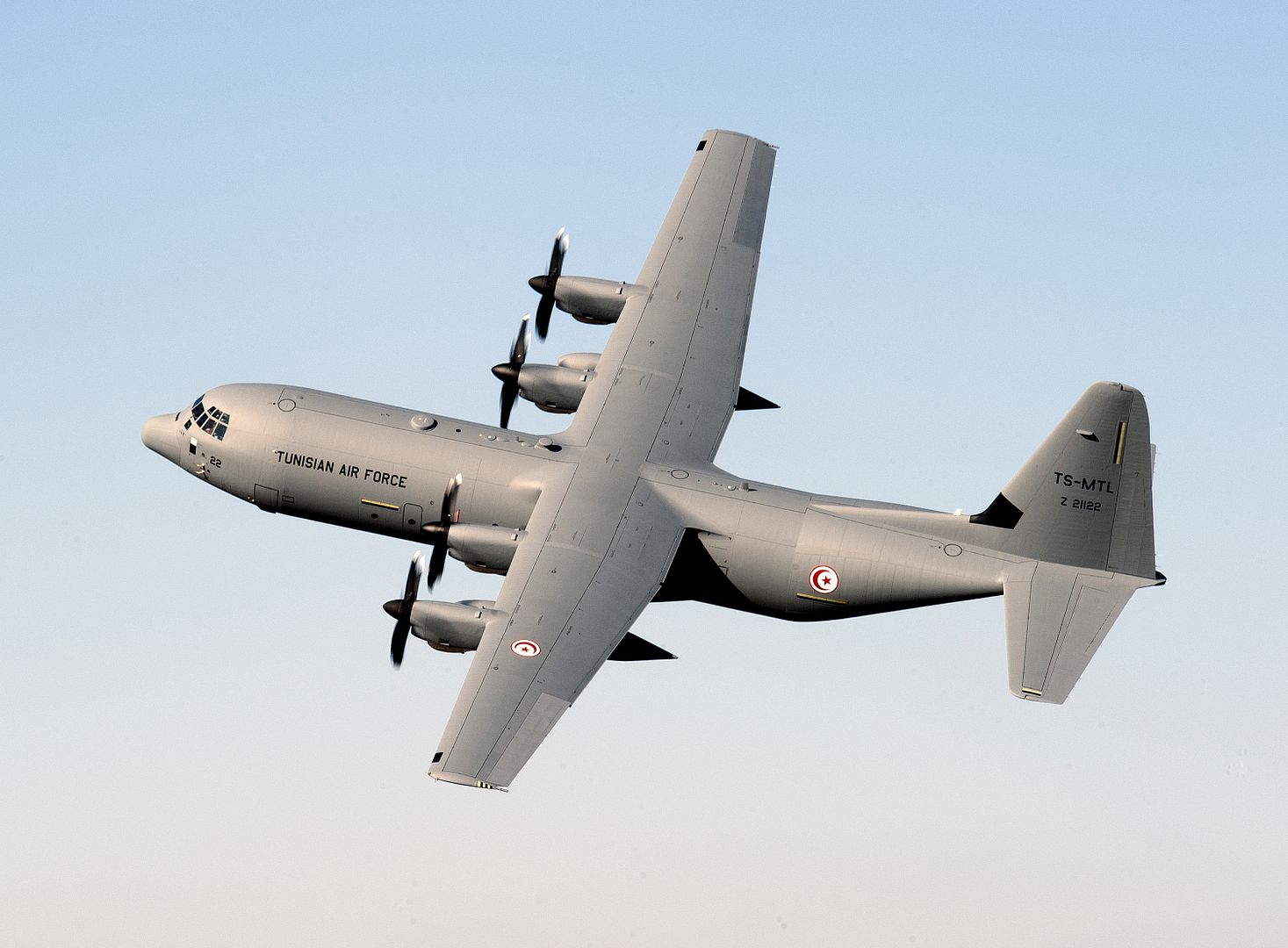
HOUSTON, Dec. 10, 2014 ? Boeing [NYSE: BA] and NASA recently completed the Ground Segment Critical Design Review and set the baseline design for the company?s Commercial Crew Transportation System, moving a step closer to the planned early 2017 voyage to the International Space Station.
Completion of the Certification Baseline Review allows construction on system hardware, including the spacecraft and United Launch Alliance (ULA) launch vehicle adaptor, to begin. It also keeps the effort on track for achieving human-rated certification of the vehicle and ULA Atlas V rocket.
?This is an important step towards achieving human-rated certification,? said Boeing Commercial Crew Program Manager John Mulholland. ?This review provided an in-depth assessment of our training, facilities, operations and our flight processes.?
Setting the design was the first milestone under the $4.2 billion contract NASA awarded to Boeing in September.
The second milestone in the Commercial Crew Transportation Capability (CCtCap) phase of the Commercial Crew Program, the Ground System Critical Design Review, evaluates all the ground operations and systems, mission operation systems, facilities, training systems, including mock-ups and trainers, and the control center.
The Crew Space Transportation (CST)-100 spacecraft, being developed in partnership with NASA?s Commercial Crew Program, will provide a U.S. system for taking astronauts and cargo to low-Earth orbit destinations, such as the space station. It will accommodate up to seven people, or a mix of crew and cargo, and features a weldless structure, wireless Internet, and Boeing LED ?Sky Lighting? technology.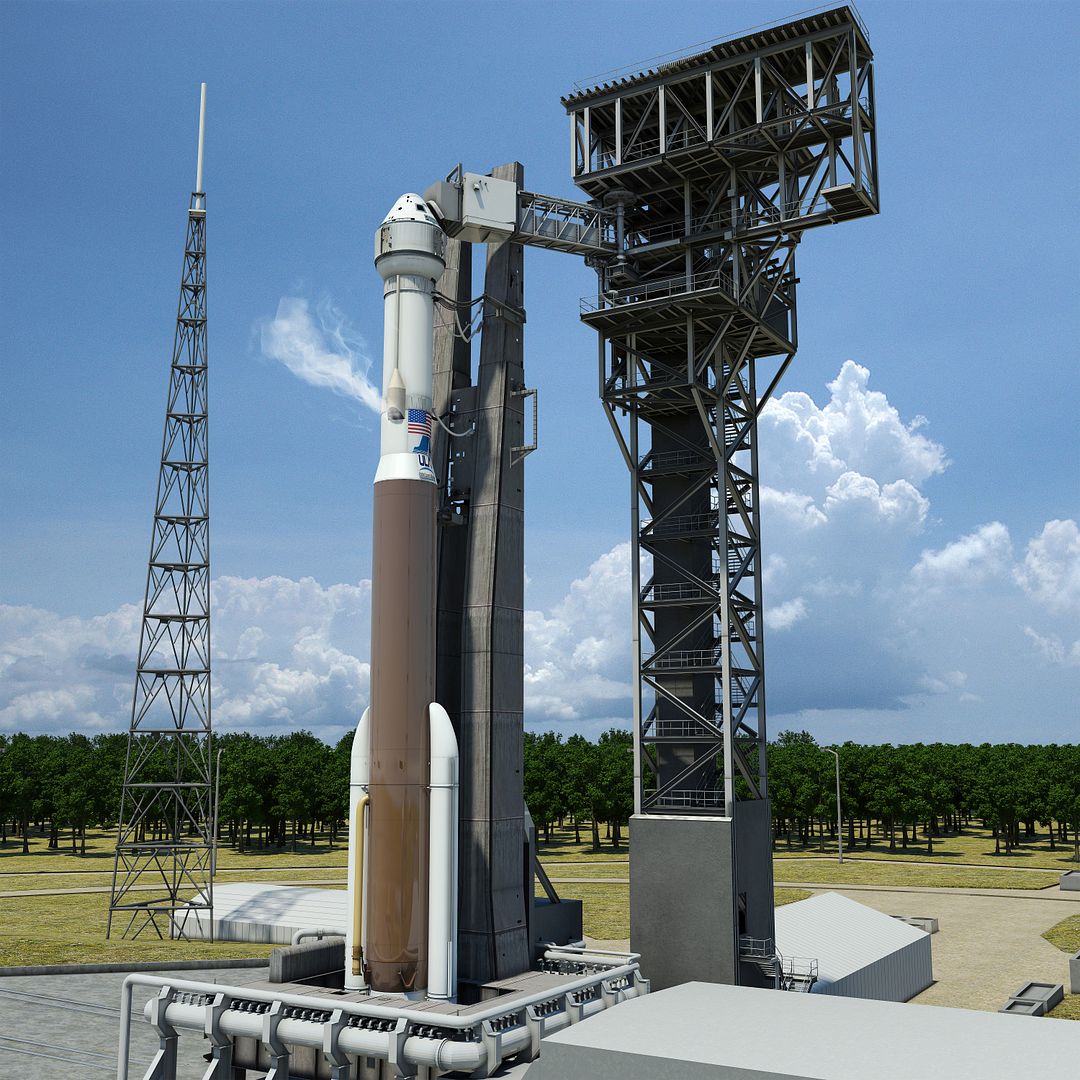
-
10 years agoMon Dec 15 2014, 04:00pm
 Main AdminSEATTLE, Dec. 15, 2014 ? Boeing [NYSE:BA] and Jetlines today announced an order for five 737 MAX 7s as the new Canadian ultra-low cost carrier builds its future fleet. The order, valued at $438 million at current list prices, includes purchase rights for an additional 16 737 MAXs.
Main AdminSEATTLE, Dec. 15, 2014 ? Boeing [NYSE:BA] and Jetlines today announced an order for five 737 MAX 7s as the new Canadian ultra-low cost carrier builds its future fleet. The order, valued at $438 million at current list prices, includes purchase rights for an additional 16 737 MAXs.
This image shows a 737 MAX 7 in Jetlines livery.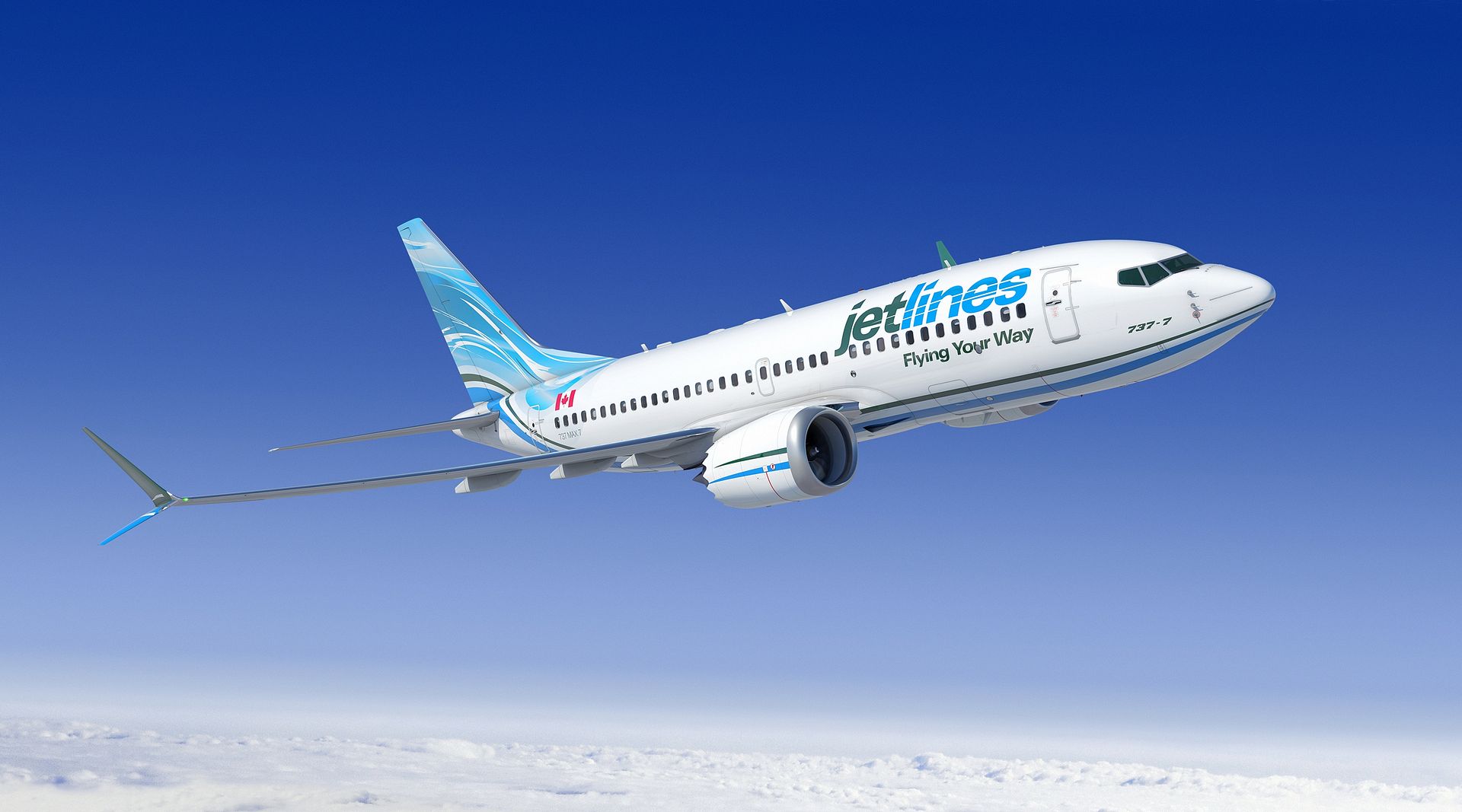
15 December 2014 Press Release
AirAsia X, the long haul affiliate of Asia?s largest low cost airline, has placed a firm order with Airbus for 55 A330neo aircraft. This is the largest single order to date for the best-selling A330 Family and reaffirms AirAsia X?s position as the biggest A330 airline customer worldwide, having now ordered a total of 91 aircraft. The announcement covers the firming up of a Memorandum of Understanding (MOU) for 50 A330neo signed during the Farnborough Air Show in July 2014, plus an additional five aircraft. Deliveries of the newly-ordered aircraft will begin.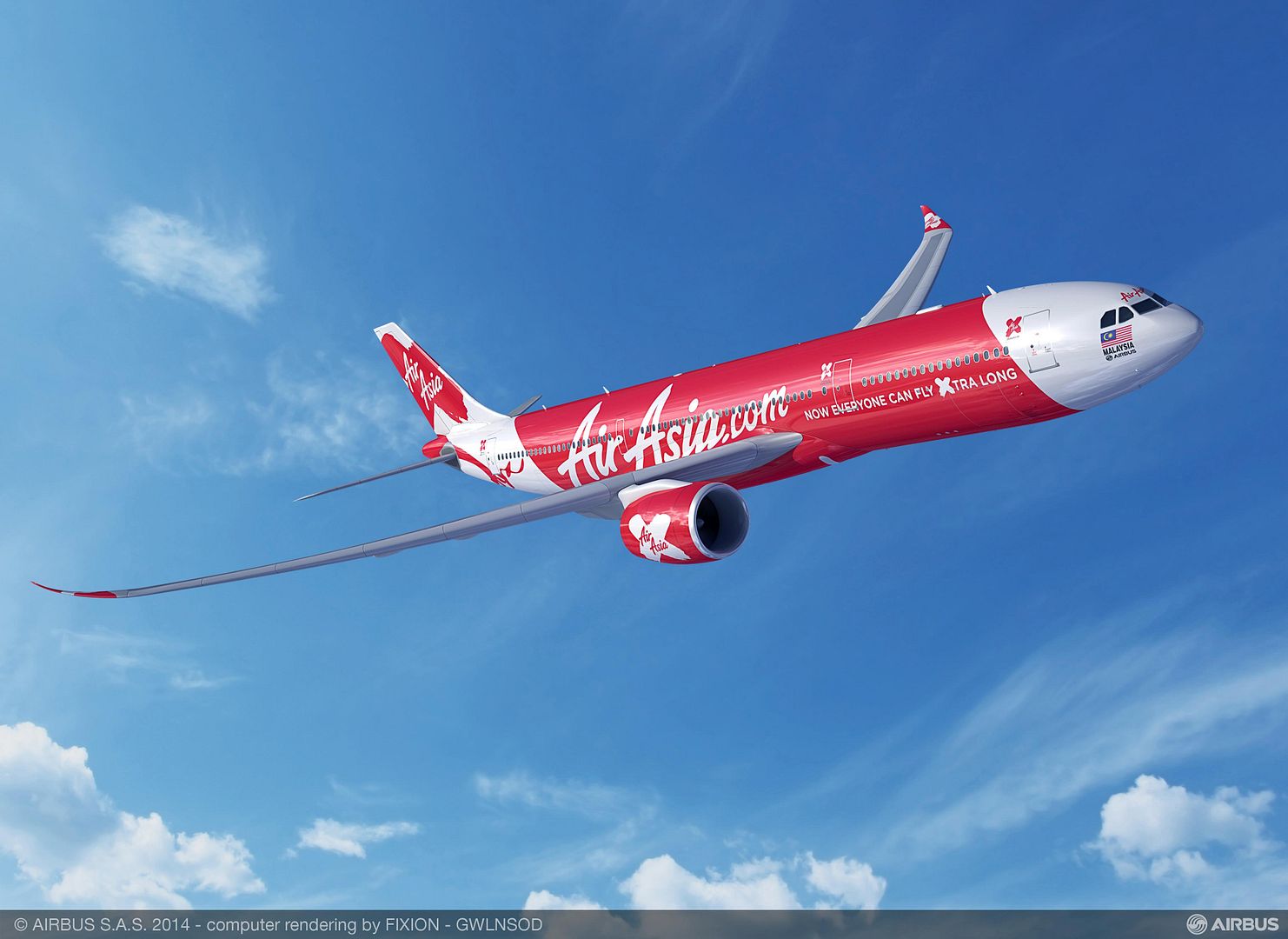
Below a link to a fantastic video of 5 A350's in formation
http://www.chonday.com/Videos/fivebujawe2
-
10 years ago
 Main AdminPOINT MUGU, Calif. ? Dec. 16, 2014 ? The U.S. Coast Guard, in conjunction with Northrop Grumman Corporation (NYSE:NOC) and the U.S. Navy, flew the MQ-8B Fire Scout unmanned helicopter off the national security cutter (NSC), USCGC Bertholf (WMSL-750), Dec. 5 off the coast of Naval Base Ventura County, Point Mugu.
Main AdminPOINT MUGU, Calif. ? Dec. 16, 2014 ? The U.S. Coast Guard, in conjunction with Northrop Grumman Corporation (NYSE:NOC) and the U.S. Navy, flew the MQ-8B Fire Scout unmanned helicopter off the national security cutter (NSC), USCGC Bertholf (WMSL-750), Dec. 5 off the coast of Naval Base Ventura County, Point Mugu.
The MQ-8B Fire Scout was controlled and operated from a Fire Scout control station located on the Bertholf by Navy pilots and Coast Guard personnel.
Unmanned Aerial Systems have the potential to significantly increase the surveillance range and capability of our Coast Guard cutters, and this demonstration will help to inform the service on the best way to proceed forward with the acquisition of the right unmanned capability in the future, Coast Guard Lt. Cmdr. Dan Broadhurst, UAS platform manager, said.
"The MQ-8B Fire Scout is the Navy's combat-proven unmanned helicopter, and can provide the same persistent maritime surveillance capabilities for the Coast Guard. I'm confident that we'll demonstrate increased NSC effectiveness while lowering the Coast Guard's operational costs," said George Vardoulakis, vice president for medium range tactical systems, Northrop Grumman Aerospace Systems.
MQ-8B is currently operational with the Navy and deployed on frigates and littoral combat ships. The MQ-8B system has completed more than 14,000 flight hours and 5,300 sorties.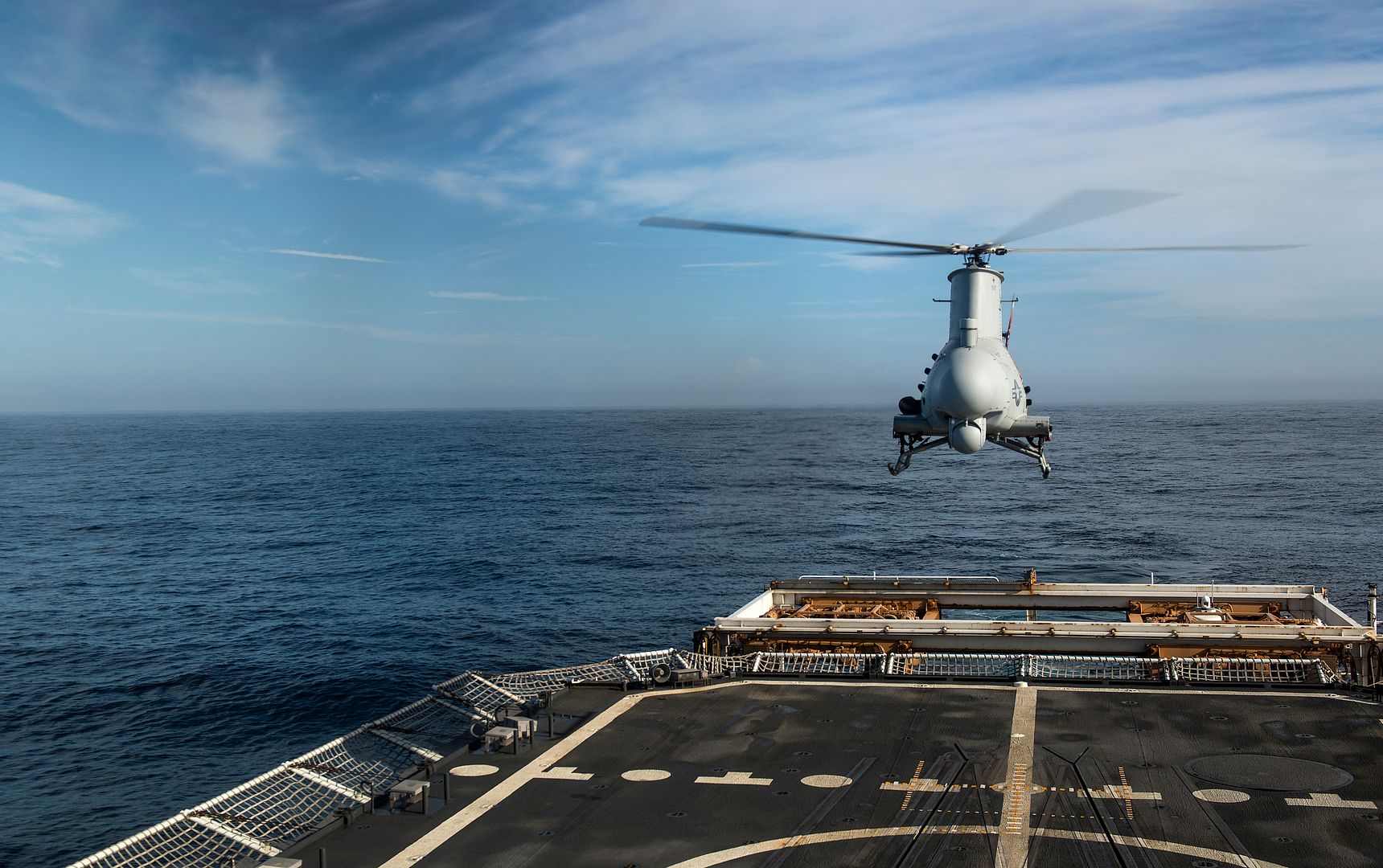
(U.S. Coast Guard photo by Petty Officer 2nd Class Luke Clayton)
DENVER, Dec. 15, 2014 ? Alaska Aerospace Corporation (AAC) has selected Lockheed Martin?s [NYSE:LMT] Athena rocket as its launch vehicle of choice for small and medium lift missions from the Kodiak Launch Complex (KLC). Lockheed Martin and AAC will work together to define and implement rocket and launch pad upgrades to support a wider range of government and commercial payloads on an Athena vehicle launched from KLC.
Today?s announcement marks the beginning of a planning phase, during which Lockheed Martin and AAC will finalize the scope of upgrades. A contract award from AAC to Lockheed Martin is expected once plans are completed. The upgraded Athena IIS will support payloads from 1,900 to 3,000 kilograms, or about 4,200 to 6,600 lbs.
?Upgrading Athena and the KLC will give government and commercial launch customers a much-needed medium-lift launch capability on the West Coast,? said Steve Skladanek, president of Lockheed Martin Commercial Launch Services (LMCLS). ?Athena and Alaska are ideal for sun-synchronous orbit missions like Earth imaging and remote sensing, and also well-suited for launching multiple small satellites on a single rocket.?
Since its first launch in 1997, the Athena family of rockets has proven itself as an affordable, reliable launch vehicle for government and commercial missions. The planned medium-lift upgrades will further enhance Athena?s capabilities so it can address an even wider array of payloads.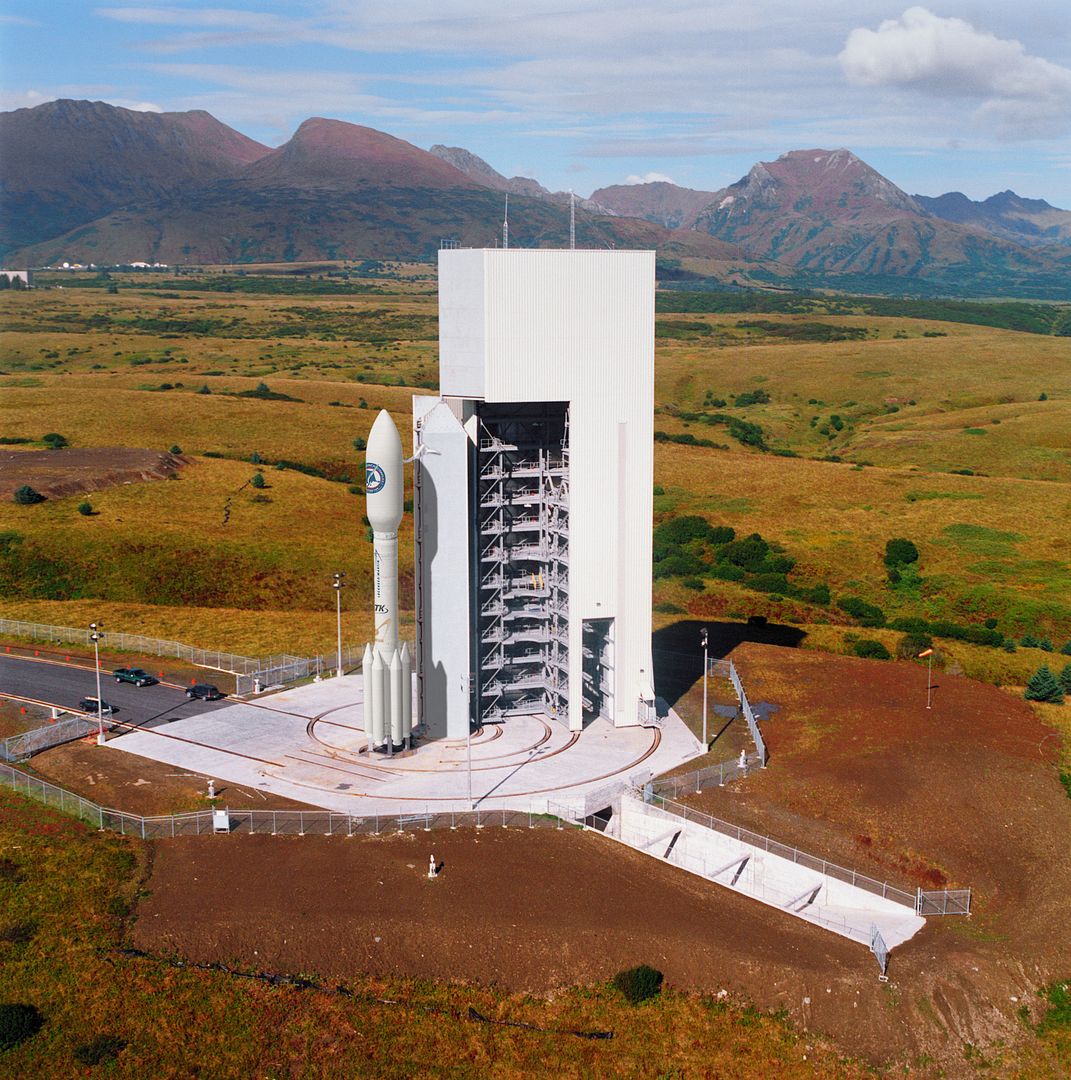
17 December 2014 Press Release
Round One of Airbus? global competition Fly Your Ideas has attracted worldwide entries on how the next generation will tackle the future challenges of aviation. Over 50 Airbus experts and innovators are now reviewing the more than 500 ideas submitted. Their mission is to select the 100 teams who merit a place in Round Two of the competition.
Ian Lane, Airbus Senior Expert and Fly Your Ideas assessor commented: ?We passionately debate and review each idea. It is an absolute privilege and inspiration to see such imaginative, unrestrained thinking from the student teams.? He adds: ?As aviation professionals, we have insight into which developments are already in the pipeline, so the idea has to be genuinely new. It could be something very simple, used in a new context or combined with an element in a way we haven?t seen before.?
Whether selected for the next round or not, Airbus will give feedback to every team on their submission, thus nurturing the spirit of innovation in the next generation.
The 100 selected teams will be announced in January 2015. Just the top five teams will make it to the final and present their ideas at a live event in June 2015. The winning team will receive a ?30,000 prize.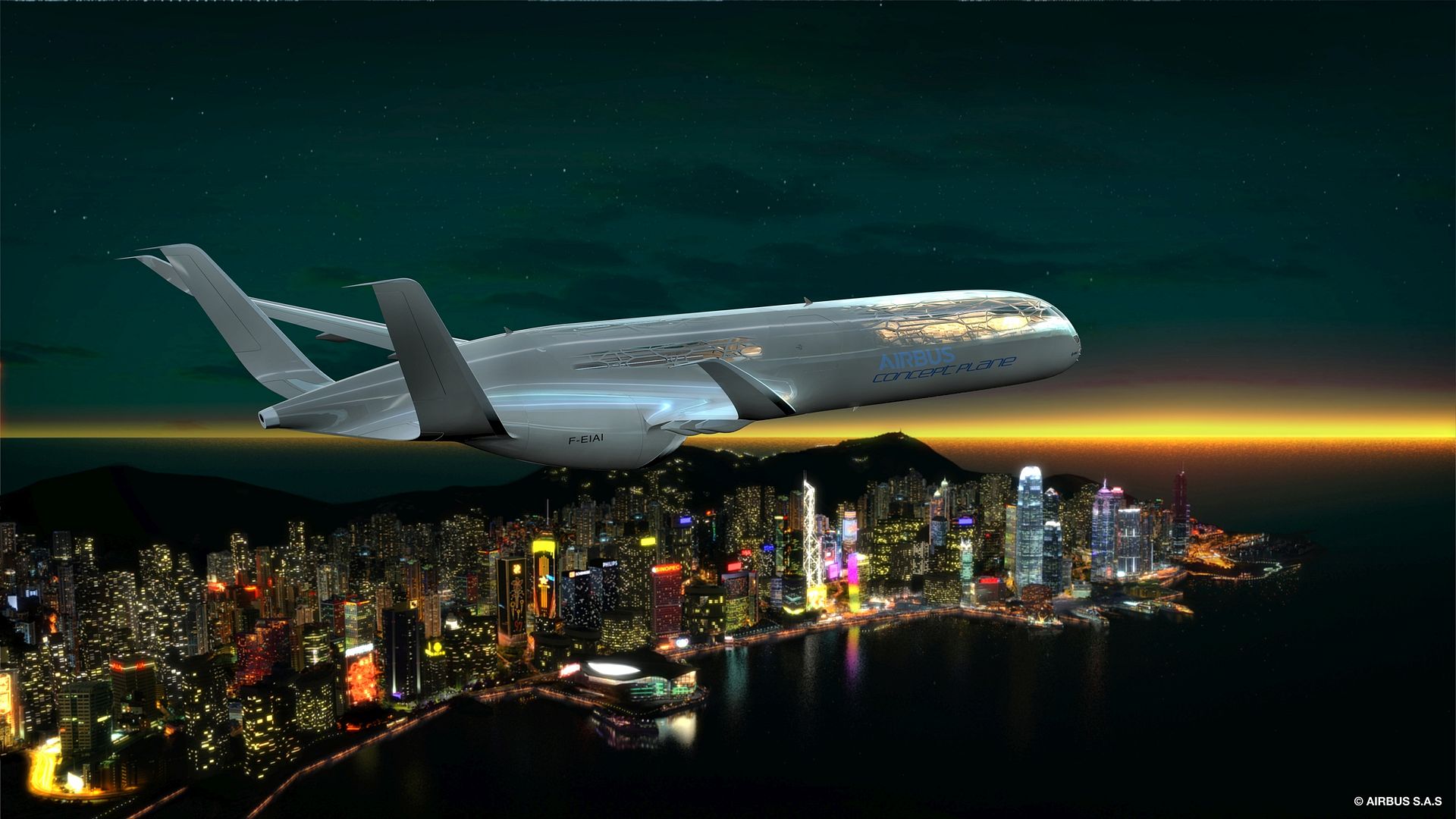
-
10 years agoFri Dec 19 2014, 01:35pm
 Main AdminMexico City, December 11, 2014 ? Embraer delivered the 1,100th E-Jet production aircraft, yesterday, during a ceremony held in the Aeromexico hangar, at the Benito Ju?rez International Airport, in Mexico City. The aircraft, an E190 model, is also the 200th aircraft from the E-Jet family flying in Latin America.
Main AdminMexico City, December 11, 2014 ? Embraer delivered the 1,100th E-Jet production aircraft, yesterday, during a ceremony held in the Aeromexico hangar, at the Benito Ju?rez International Airport, in Mexico City. The aircraft, an E190 model, is also the 200th aircraft from the E-Jet family flying in Latin America.
?In the same year that we are celebrating the E-Jets? 10th anniversary of operations, worldwide, we are immensely proud to be recognizing yet another milestone that this versatile family of aircraft has now achieved,? said Paulo Cesar Silva, President & CEO, Embraer Commercial Aviation. ?As one of Embraer?s largest operators, it is only fitting that Aeromexico is the recipient of the 200th E-Jet on the Latin American continent, as well as the 1,100th E-Jet worldwide.
?Embraer has been a very important ally for over 10 years; currently, over 50 percent of our fleet is comprised of these Brazilian aircraft,? said Andres Conesa, airline?s CEO. ?In Aeromexico we feel very proud to be the carrier that receives 1,100th Embraer E-Jet and integrate it into our fleet, one of the most modern in the industry.?
Aeromexico operates a fleet of 62 Embraer jets through its regional brand, Aeromexico Connect: 27 E190s, six E170s, three E175s, and 26 ERJ 145s.
The first delivery of an E -Jet in Latin America occurred in 2005. Currently, eight airlines, from seven countries, operate the E-Jets in the region, where Embraer is the leader in the segment of jets up to 130 seats, with a 70% market share.
Embraer is the only manufacturer to develop a modern family of four airplanes specifically targeted for the 70 to 130-seat segment. Since their formal launch of the program, in 1999, the E-Jets have redefined the traditional concept of regional aircraft by operating across a range of business applications.
The E-Jets family entered revenue service in 2004. Currently, E-Jets are flying with 65 airlines from 45 countries, holding a 62% market share, based on deliveries, in the segment of jets with capacity up to 130 seats. Today, E-Jets are flying with mainline, low-cost and regional carriers, as well as charter airlines. The E-Jets have a strategically located global network of customer support and services with 37 MRO service centers, worldwide, including 12 Embraer Authorized Service Centers (EASC) and 25 independent centers.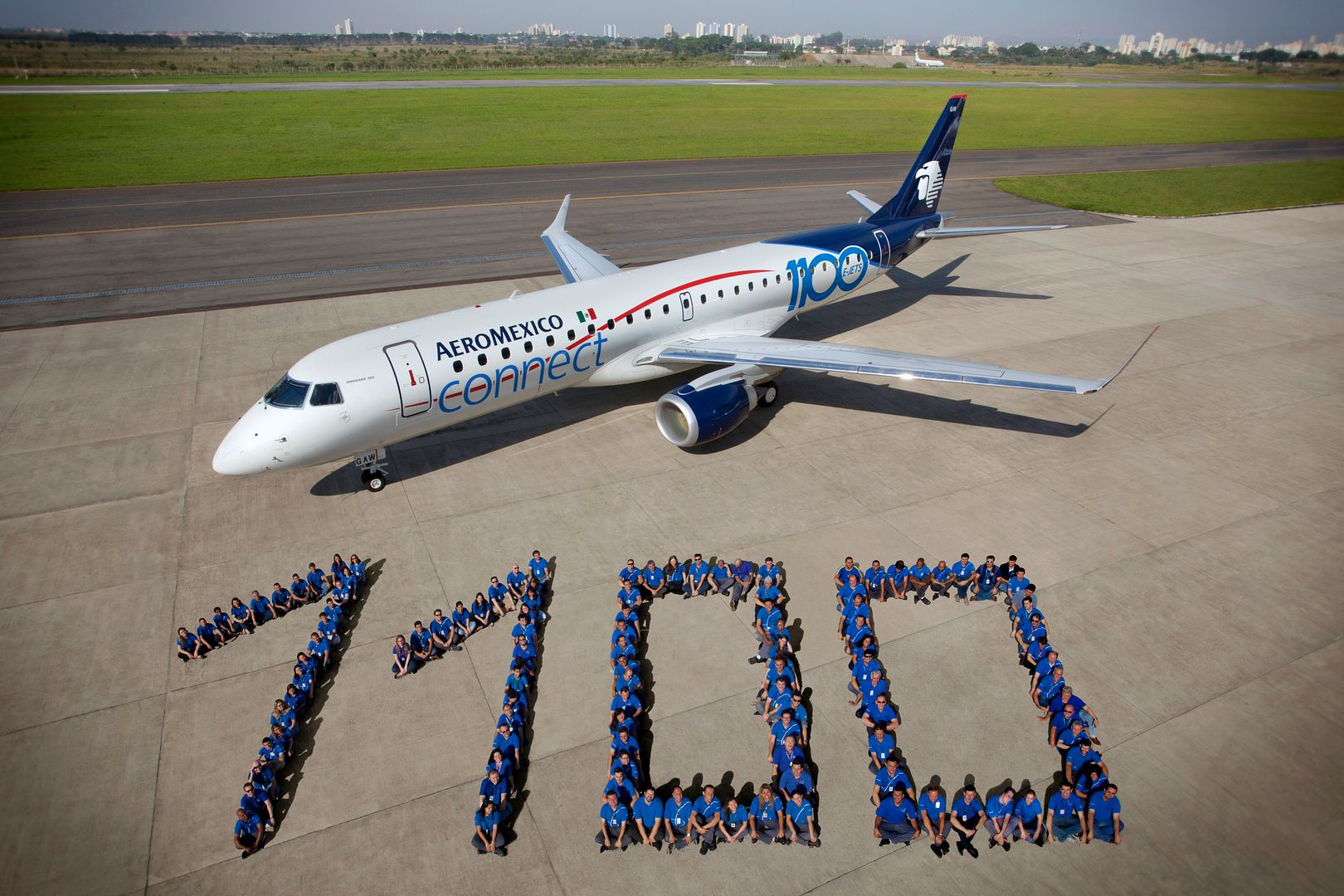
Cologne, Germany, December 16, 2014 ? Embraer?s Legacy 500 executive jet today was granted certification by the European Aviation Safety Agency (EASA) during a ceremony at its headquarters, in Cologne, Germany. This approval enables entry into service of the aircraft in the Member States of the European Union as well as in EASA associated countries.
?EASA?s certification is a very important achievement for the Legacy 500, which is introducing advanced technologies and superior comfort in the midsize class,? said Marco T?lio Pellegrini, President and CEO of Embraer Executive Jets. ?The approval of this revolutionary aircraft is a testament to our commitment to deliver true innovation to the market.?
December 17, 2014 (Bordeaux-Merignac, France): Dassault Aviation today rolled back the curtains on the ultra long range Falcon 8X, the company?s new flagship and the latest addition to the growing Falcon business jet family.
Unveiled at Dassault?s Bordeaux-Merignac facility before an audience of customers, operators, industrial partners and representatives of certification authorities, the 8X will offer the greatest range and the longest cabin in the Falcon line, along with the most extensive selection of cabin configurations available on any executive jet.
Announced in May of this year at European Business Aviation Convention & Exhibition (EBACE), the Falcon 8X builds on the advanced performance and technological prowess of the popular 7X long range trijet, the most innovative and fastest selling Falcon ever. The 8X will offer a range of 6,450 nm (11,945 km) ? and a cabin 3.5 feet longer than the 7X while affording the same low operating economics and remarkable operating flexibility for which all Falcons are known.
?Dassault?s tradition of innovation and excellence helps explain the success of the Falcon 7X. More than 250 aircraft have been built in the seven years since service introduction, and demand remains strong. We anticipate a similarly bright future for the 8X.? said Eric Trappier, Chairman and CEO of Dassault Aviation.
Final assembly and testing of the 8X is taking place at the state-of-the-art Charles Lindbergh hall at Merignac. The facility was built to handle production of the Falcon 7X, and the 8X will draw on the same advanced digital design and manufacturing techniques pioneered with the 7X.
More than 8,000 Dassault civil and military aircraft, including 2,300 Falcons, have taken to the air from M?rignac since it opened in 1949.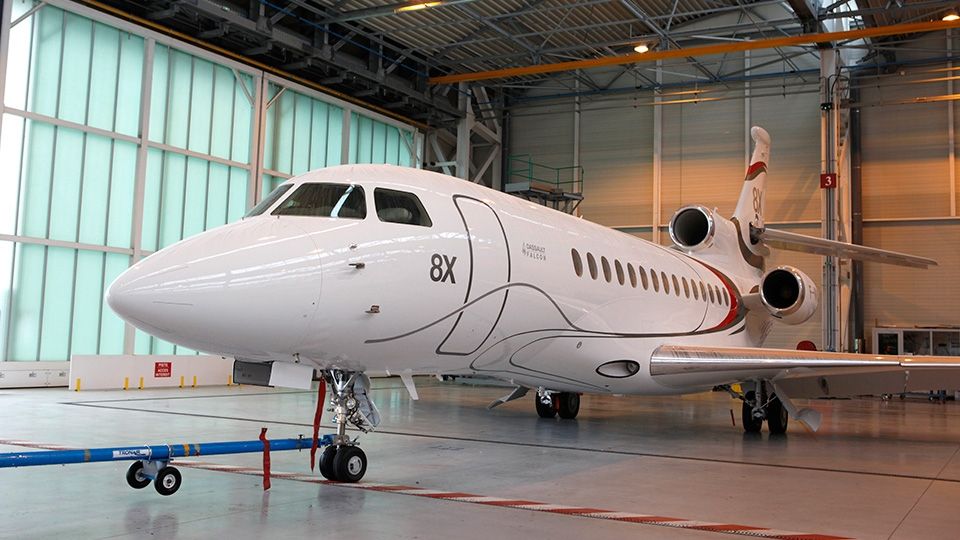
EVERETT, Wash., Dec. 18, 2014 /PRNewswire/ -- Boeing [NYSE: BA] and Avianca celebrated the delivery of the first 787 Dreamliner for the Latin American carrier, helping the airline stay at the forefront of technology in the region.
"The addition of the first Boeing 787-8 to Avianca's fleet is a milestone for commercial aviation and for our airline, which strives to bring the most advanced aviation technology to our passengers," said Avianca President and CEO Fabio Villegas Ramirez. "With this aircraft, we continue to fulfill the dream this company has had from the beginning: To make better and better connections between Latin America and the world, while giving our customers more enjoyable flights aboard airplanes designed to provide the greatest comfort along with maximum operational performance."
The 787 is a family of technologically advanced, super-efficient airplanes with new passenger-pleasing features. In addition to bringing big-jet ranges to midsize airplanes, the 787 uses 20 percent less fuel and creates 20 percent fewer emissions than the airplanes it replaces.
"The 787 Dreamliner, with its high efficiency, enhanced environmental performance and preferred passenger experience, is an ideal airplane for the Latin American market, and Boeing is pleased and honored that Avianca will use the 787 to modernize its fleet and delight its customers," said Van Rex Gallard, vice president, Latin America, Africa and Caribbean Sales, Boeing Commercial Airplanes. "We are excited to grow our partnership with Avianca for today's fleet and for the future."
In addition to providing airlines with unprecedented fuel economy and low operating costs, the 787 features a host of new features that greatly enhance the passenger experience.
Avianca's Boeing 787-8 will carry 28 passengers in business class and 222 in economy class. Passengers in both classes will also experience cabin environment improvements made possible on the 787 such as dynamic LED lighting, the largest windows, bigger overhead bins, a lower cabin altitude, a more humid environment, low interior noise, cleaner air and a smoother ride.
With 95 years in operation, Avianca is working to fly a younger fleet than ever, flying with leading-edge technology to 24 destinations in Colombia and 98 destinations in South America, North America and Europe.
To date, 58 customers have ordered 1,055 787s, making the Dreamliner the fastest-selling twin-aisle airplane in Boeing history.
18 December 2014 Press Release
At a ceremony in Abu Dhabi, Etihad Airways, one of the world?s leading airlines, welcomed the first of its ten new Airbus A380 aircraft. Etihad Airways is the thirteenth airline to operate the A380, and the aircraft is the 150th A380 delivered by Airbus.
The delivery is set to boost capacity on several of Etihad?s most in-demand routes, taking the airline to new heights as it continues to redefine the flying experience. Setting new benchmarks in onboard product, service, hospitality and style, Etihad Airways has invested in enhancing the passenger experience through the acquisition of Airbus? game changing A380.
The A380 offers airlines increased capacity, long-haul range, fuel efficiency and improved performance but also immense flexibility in cabin choices, as yet again demonstrated by Etihad Airways. The aircraft is a firm favorite for passengers as it brings an exceptional in-flight experience with a smoother flight, quieter cabin and the highest level of comfort available in the sky.
?Since its inception, Etihad Airways has experienced exponential growth and we?re pleased to have contributed to that success. I am convinced that our flagship, the A380, will provide an efficient solution to support Etihad?s continued expansion,? said Airbus President and CEO, Fabrice Br?gier.
Etihad?s A380 is designed to carry 498 guests in four living spaces on the aircraft, including two VIP guests in The Residence by Etihad?, nine guests in the First Apartments, 70 guests in the Business Studio, and 417 guests in Economy SmartSeats. Equipped with the latest entertainment systems and the plush surroundings of Etihad Airways? interior, passengers can expect an exceptionally comfortable journey.
Etihad Airways? President and Chief Executive Officer, James Hogan, said: ?The Etihad Airways A380 will offer a world class travel experience across all cabins. We are delighted to launch this first A380, with nine to follow, which will set a new benchmark for air travel, particularly with the introduction of the Residence by Etihad?, the only three room cabin in the sky.?
Etihad?s first A380 will make its debut on the popular London Heathrow route, from Abu Dhabi International Airport, in December. By the end of 2015, Etihad Airways will have five A380s in operation, with plans to introduce the aircraft on the airline?s Sydney and New York JFK routes.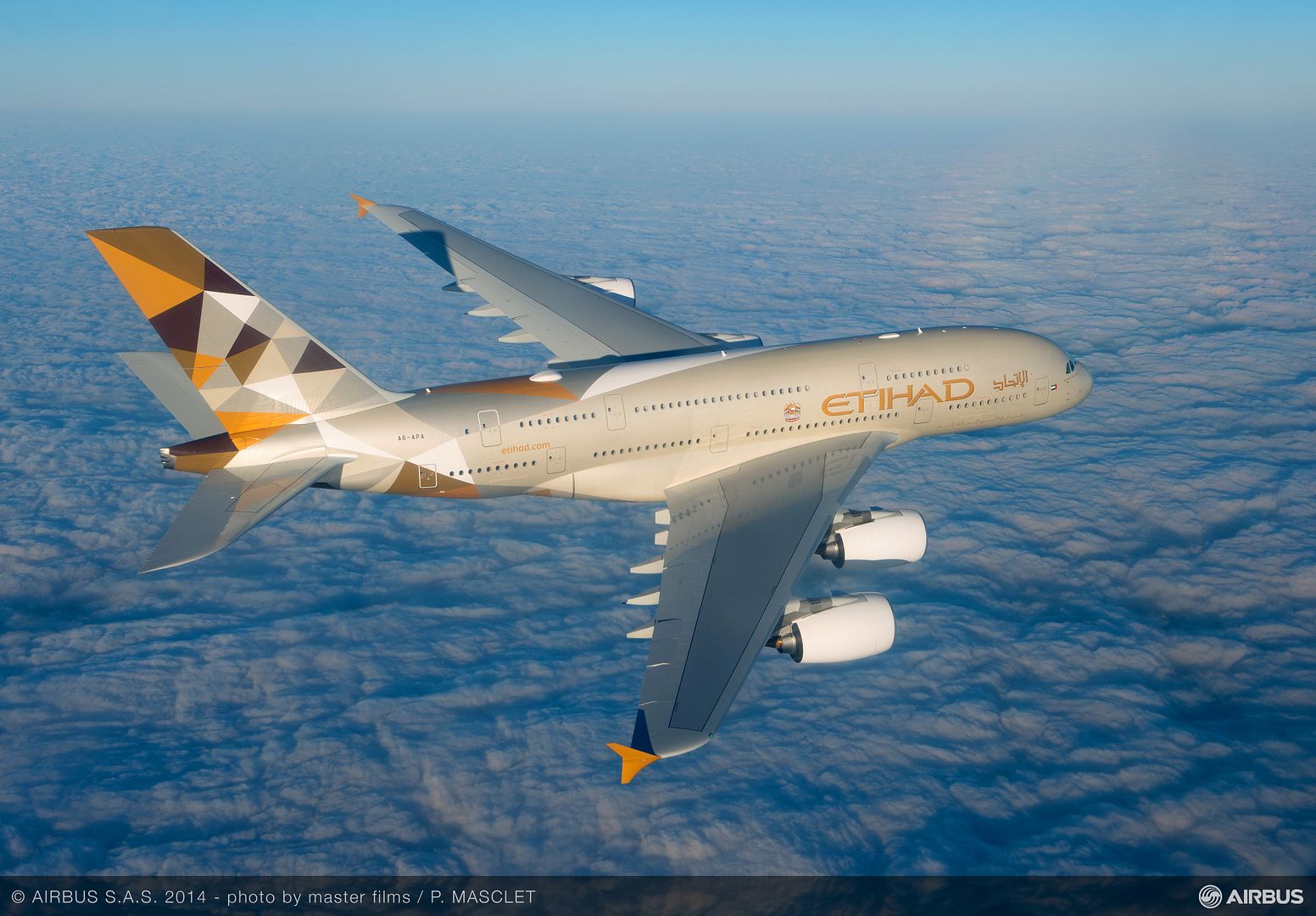
-
10 years agoFri Dec 19 2014, 01:39pm
 Main AdminKENNEDY SPACE CENTER, Fla., Dec. 18, 2014 ? The Lockheed Martin [NYSE:LMT]-built Orion spacecraft has just completed its 2,700 mile journey from Naval Base San Diego back to Kennedy Space Center (KSC). The NASA Ground Systems Development and Operations team transported the spacecraft across the country by truck, and the entire trip took eight days.
Main AdminKENNEDY SPACE CENTER, Fla., Dec. 18, 2014 ? The Lockheed Martin [NYSE:LMT]-built Orion spacecraft has just completed its 2,700 mile journey from Naval Base San Diego back to Kennedy Space Center (KSC). The NASA Ground Systems Development and Operations team transported the spacecraft across the country by truck, and the entire trip took eight days.
?Despite travelling a bit slower than what we?re used to, Orion made pretty good time,? said Michael Hawes, Lockheed Martin vice president and Orion program manager. ?Most of the team hasn?t had eyes on the spacecraft since November, when we rolled to the launch pad, so we?re excited to take a look.?
Once back to KSC, Orion?s trailer and transport fixture were brought to the Mission Operations Support Building where the accumulation of dirt and grime from the road was removed. The spacecraft will then be brought into the Launch Abort System Facility, where the team will remove the back shell panels and start post-flight assessments in early January. Engineers will perform a visual inspection of hardware such as cabling, fluid lines, propulsion systems and avionics boxes to determine how these components sustained Exploration Flight Test-1.
Once the initial inspections are completed, the spacecraft will be transported to the Payload Hazardous Servicing Facility for offloading of hydrazine and ammonia. In March, Lockheed Martin will provide a complete data analysis report to NASA, which will include information about the vehicle?s performance and recommendations based on the results.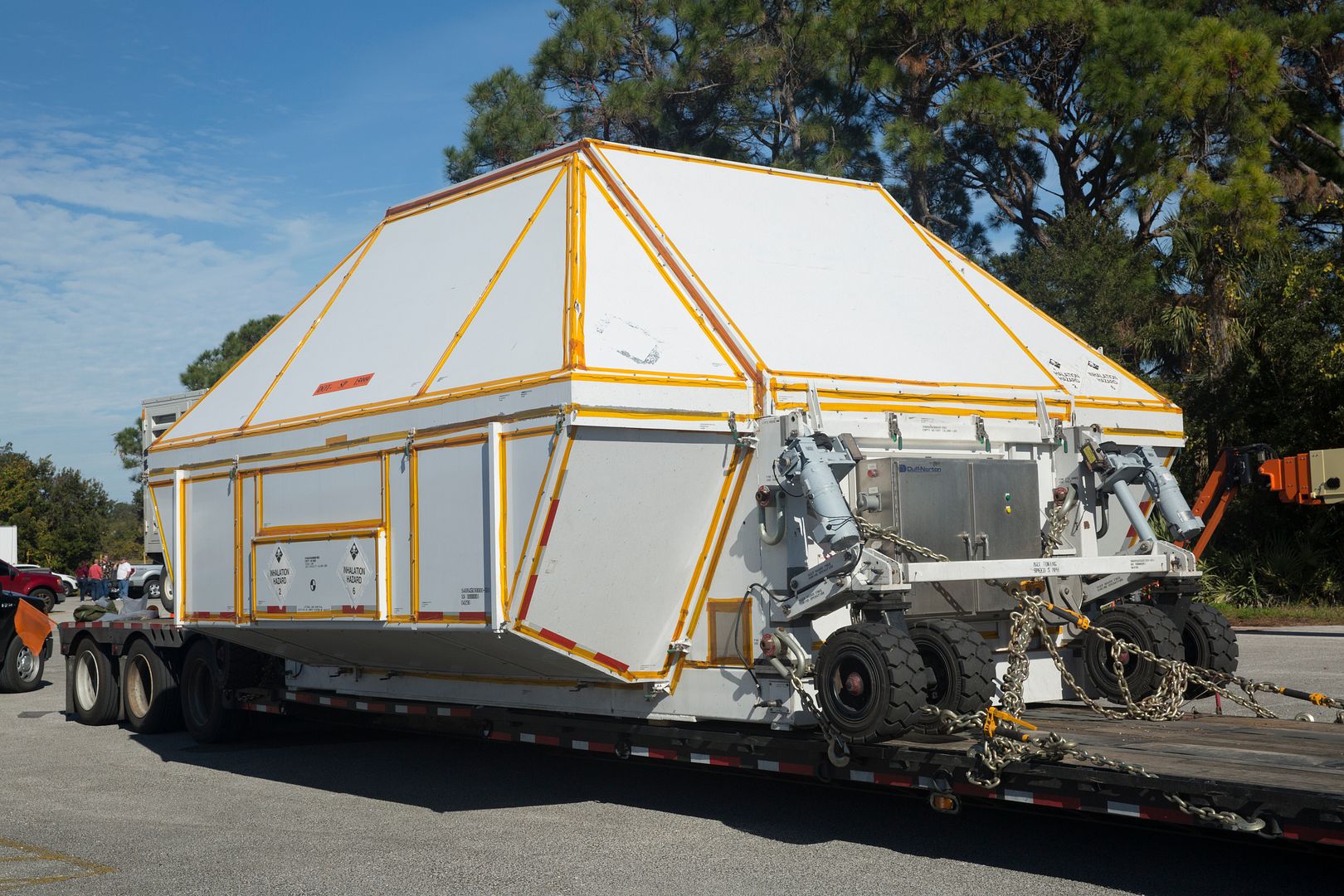
SEATTLE, Dec. 18, 2014 -- Boeing [NYSE: BA] and BOC Aviation have finalized an order for two additional 737-800s, valued at $186 million at current list prices. Pictured here is a 737-800 in BOC Aviation colors.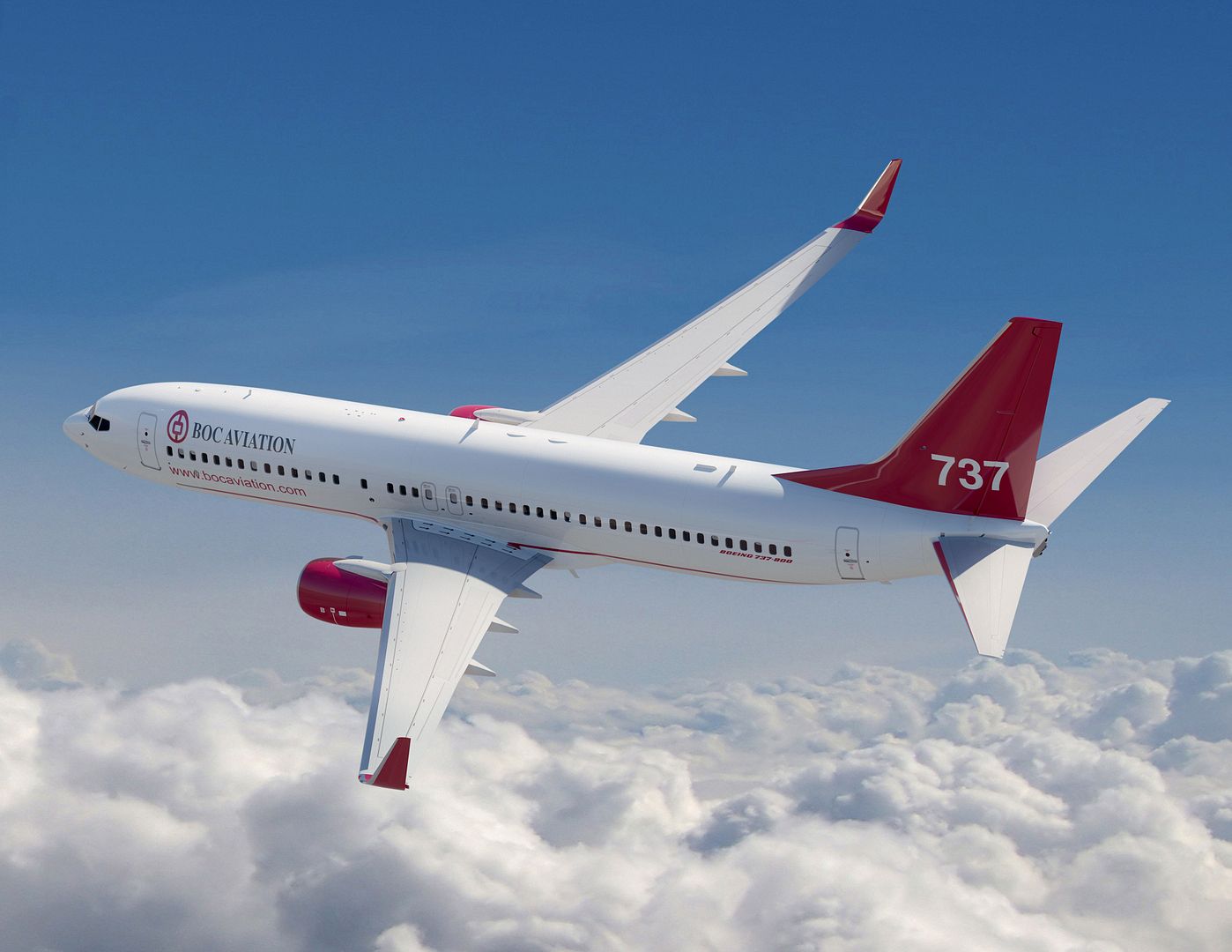
18 December 2014 Press Release
Following a Memorandum of Understanding (MOU) signed in July of this year, Hawaiian Airlines has finalized an order for six A330-800neo aircraft. The agreement adds yet another name to the growing list of launch customers for the new aircraft type. The new commitment replaces a previous order placed by Hawaiian for six A350-800s.
?The A330-800neo is an aircraft which meets all of our needs,? said Mark Dunkerley, President and CEO of Hawaiian Airlines. ?It is the right size, with the right range and costs, and shares much commonality with our A330-200 fleet. Our customers and crew love the aircraft and we are thrilled that it will continue to be Hawaiian?s widebody mainstay for far into the future.?
?Working with Hawaiian Airlines is a unique pleasure because their team is truly visionary when it comes to choosing aircraft,? said John Leahy, Airbus Chief Operating Officer, Customers. ?The A330-800neo is perfectly suited to Hawaiian?s unique route structure, offering a great balance of range and capacity that will allow the airline to expand its reach to new audiences.?
Hawaiian Airlines currently operates a fleet of 19 A330-200 aircraft, with additional orders for 16 A321neo aircraft on backlog.
-
10 years ago
 Main Admin
Main Admin -
10 years agoMon Dec 22 2014, 01:59pm
 Main AdminSEATTLE, Dec. 19, 2014 ? Boeing [NYSE: BA] and Malaysia Airlines celebrated the direct delivery of the airline?s 100th 737 aircraft at an event in Seattle. Shown here Aminuddin Zakaria, senior vice president, airline engineering group, Malaysia Airlines; Ahmad Jauhari Yahya, chief executive officer, Malaysia Airlines; Erik Nelson, vice president of 737 field operations and delivery, Boeing Commercial Airplanes; and Suvendoo Ray, Boeing Commercial Airplanes sales director, cut a ceremonial ribbon marking the special delivery.
Main AdminSEATTLE, Dec. 19, 2014 ? Boeing [NYSE: BA] and Malaysia Airlines celebrated the direct delivery of the airline?s 100th 737 aircraft at an event in Seattle. Shown here Aminuddin Zakaria, senior vice president, airline engineering group, Malaysia Airlines; Ahmad Jauhari Yahya, chief executive officer, Malaysia Airlines; Erik Nelson, vice president of 737 field operations and delivery, Boeing Commercial Airplanes; and Suvendoo Ray, Boeing Commercial Airplanes sales director, cut a ceremonial ribbon marking the special delivery.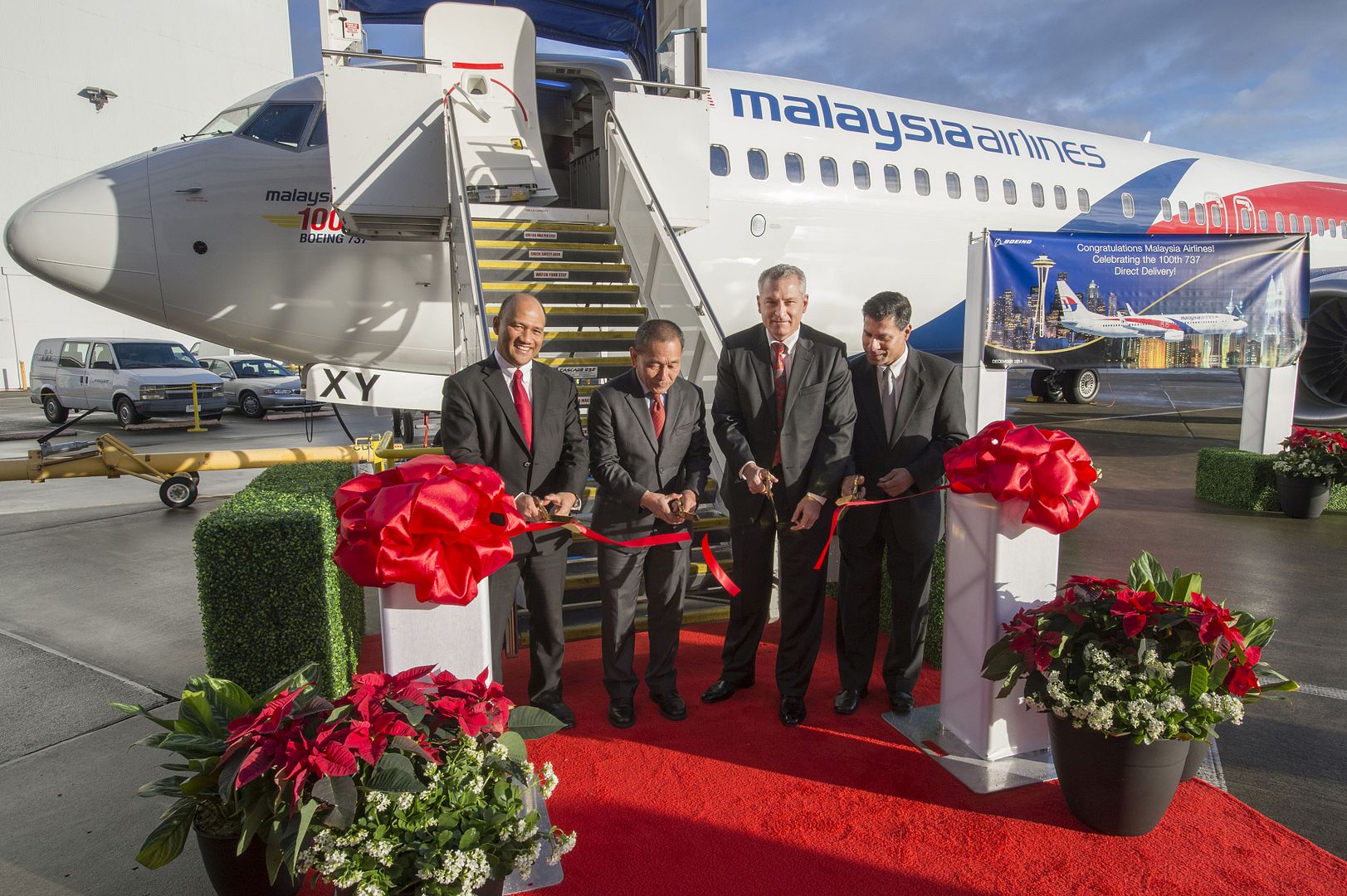
22 December 2014 Press Release
Airbus has delivered the first A350 XWB, the world?s latest generation widebody airliner, to launch customer Qatar Airways. The A350 XWB redefines the way people fly for the coming decades and opens up a new era in comfortable, efficient long-haul air travel when it enters service with Qatar Airways, renowned for leading the industry to new heights in service excellence.
The A350 XWB embodies the most advanced technologies and breakthrough innovations in aerodynamics, light-weight materials and aircraft systems. Powered by ultra-fuel-efficient and very quiet Rolls-Royce Trent XWB engines and an extra-wide, bright and spacious cabin, the A350 XWB promises to be a firm favourite with travellers who will discover a whole new way of flying. Airlines will also benefit from unequalled levels of operating efficiency and cost effectiveness.
Qatar Airways Group Chief Executive, His Excellency Mr. Akbar Al Baker, said, ?Receiving the A350 XWB as global launch customer is a very proud moment for Qatar Airways, and after much anticipation, I am delighted that the day has come when we will welcome this latest generation aircraft into our rapidly expanding fleet.
?In the seven years since we first placed our order for this new aircraft type at the Paris Air Show, investing in a partnership programme with Airbus, there has been significant growth in the airline industry. I am confident that this increase in passenger numbers around the world will only increase further in the years to come, and delighted that Qatar Airways will be leading the way in the aviation sector in offering our passengers the opportunity to travel on board the most modern of airliners in the sky.?
John Rishton, Rolls-Royce, Chief Executive Officer said: ?We are very proud to have worked with Qatar Airways and Airbus on the A350 XWB, using the latest technology to deliver new standards in customer service. This is a very important day for everyone at Rolls-Royce. It is the culmination of years of hard work and the start of a new chapter for our business.?
Fabrice Br?gier, Airbus President and CEO said: ?Handing over the first A350 XWB represents a significant step in Airbus and aviation history. The A350 XWB becomes the most modern aircraft in service, developed with our excellence established over 45 years in meeting our customers? needs. The A350 XWB is the latest Airbus aircraft to join the skies, revolutionising our industry and redefining the way people fly.? He adds: ?It is with tremendous pride that we are delivering our first A350 XWB today to our launch customer, Qatar Airways. It?s a perfect match, to be handing over the first of an all-new, world class aircraft to a leading, world class airline.?
The A350 XWB fits seamlessly alongside Qatar Airways? growing fleet of A380s and A330s, making the carrier the world?s first airline to operate each member of Airbus? market leading Widebody Family. Qatar Airways? A350 XWBs, in combination with their A380s and A330s, will offer unprecedented levels of interoperability and comfort on the rapidly expanding Qatar Airways network of excellence.
The A350 XWB is the latest addition to the market-leading Airbus Widebody product line. Offering its customers a game-changing reduction in fuel-burn, the all-new mid-size long-range A350 XWB has carbon fibre fuselage and wings and sets new standards in terms of passenger comfort, operational efficiency and cost-effectiveness. At the end of November 2014, the A350 XWB had won 778 orders from 41 customers worldwide.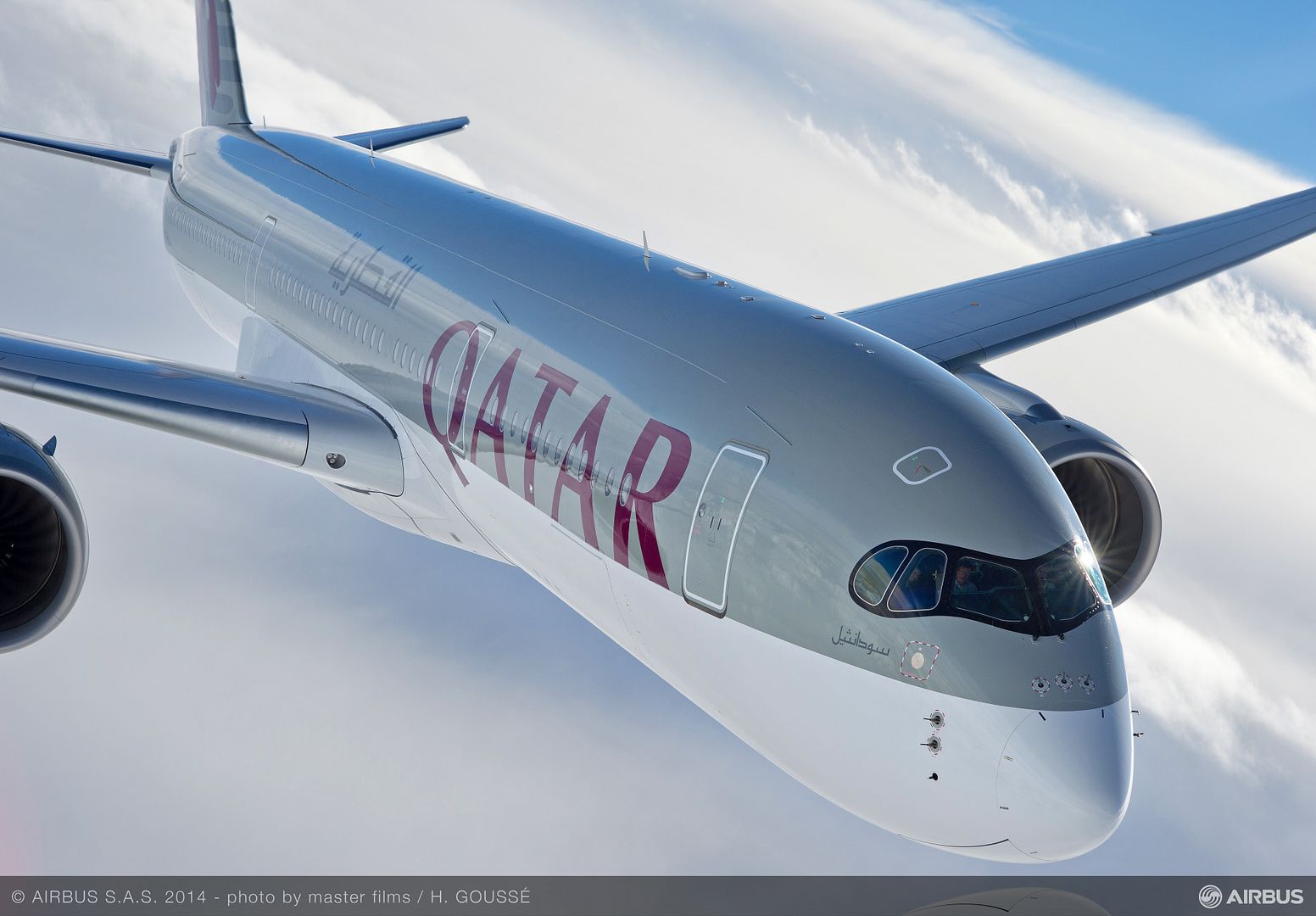
U.S. Air Force Maj. Dan Edgar, 74th Fighter Squadron A-10C Thunderbolt II pilot, flies a low-approach Dec. 3, 2014, over White Sands Missile Range, N.M. The A-10C's primary functions include airborne forward air control, close air support and combat search and rescue. (U.S. Air Force Photo by Airman 1st Class Ryan Callaghan/Released)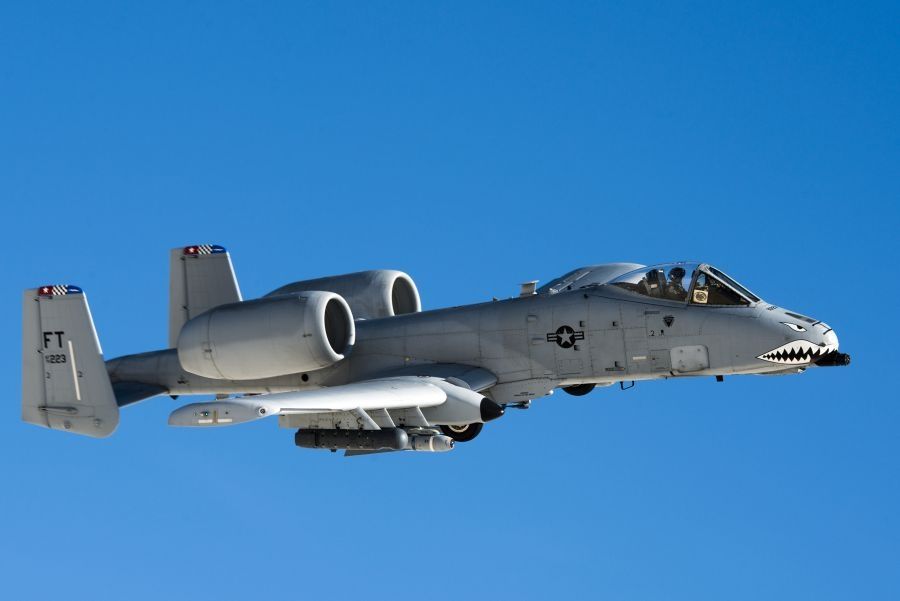
U.S. Air Force Lt. Col. Ryan Haden, 74th Fighter Squadron commander, lands an A-10C Thunderbolt II in the sand Dec. 3, 2014, at the White Sands Missile Range, N.M. The A-10's ability to land on a desert landing ***** allows for increased refueling and re-arming opportunities. (U.S. Air Force Photo by Airman 1st Class Ryan Callaghan/Released)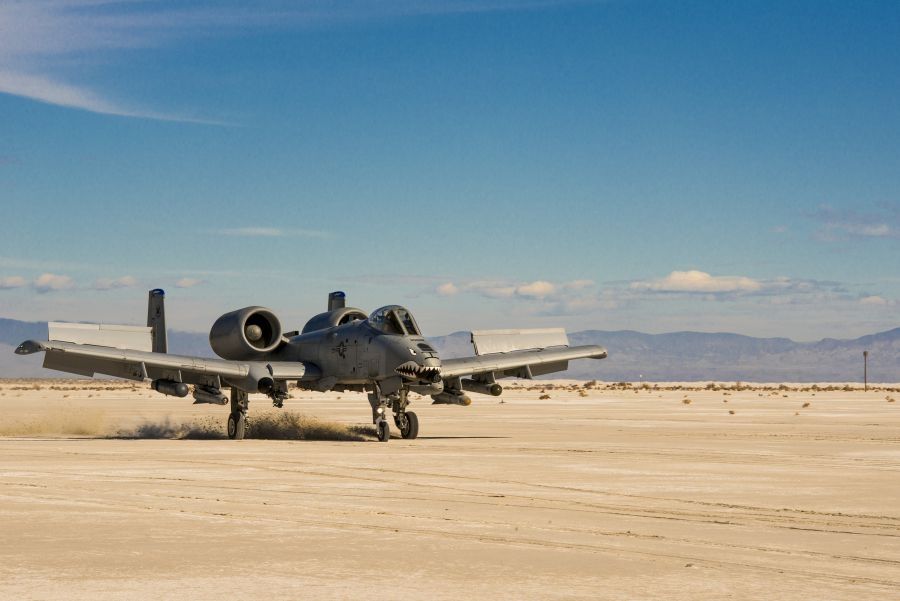
U.S. Air Force Lt. Col. Ryan Haden, 74th Fighter Squadron commander, prepares for takeoff in an A-10C Thunderbolt II, Dec. 3, 2014, at the White Sands Missile Range, N.M. The A-10 is currently the only Air Force fighter aircraft capable of desert landing and takeoff. (U.S. Air Force Photo by Airman 1st Class Ryan Callaghan/Released)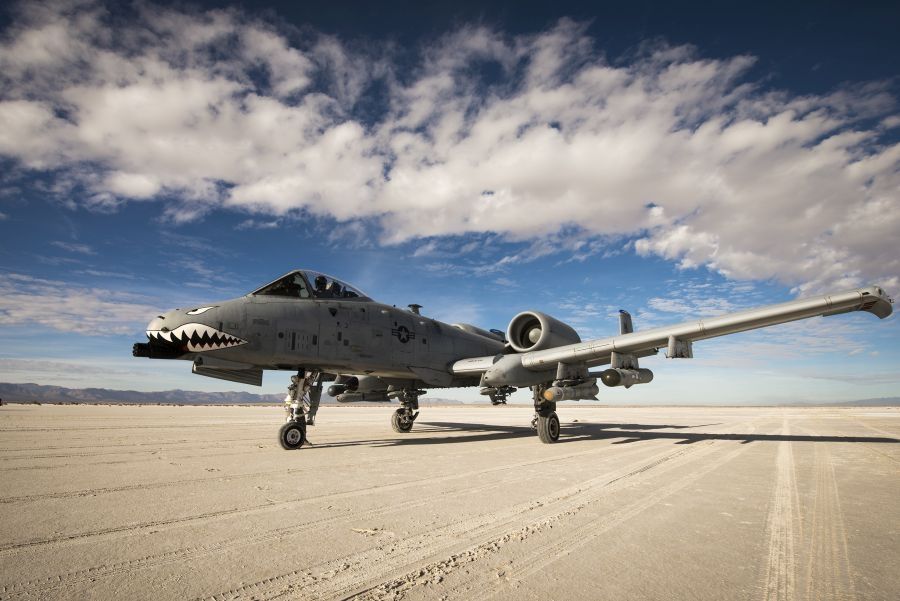
-
10 years ago
 Main AdminEVERETT, Wash., Dec. 23, 2014 /PRNewswire/ -- Boeing [NYSE: BA] and Azerbaijan Airlines today announced the delivery of the airline's first 787 Dreamliner. With this delivery, Azerbaijan Airlines becomes the first airline in the Commonwealth of Independent States to operate the 787. Pictured here is Azerbaijan Airlines' 787 Dreamliner.
Main AdminEVERETT, Wash., Dec. 23, 2014 /PRNewswire/ -- Boeing [NYSE: BA] and Azerbaijan Airlines today announced the delivery of the airline's first 787 Dreamliner. With this delivery, Azerbaijan Airlines becomes the first airline in the Commonwealth of Independent States to operate the 787. Pictured here is Azerbaijan Airlines' 787 Dreamliner.
Post a reply
- Go to Previous topic
- Go to Next topic
- Go to Welcome
- Go to Introduce Yourself
- Go to General Discussion
- Go to Screenshots, Images and Videos
- Go to Off topic
- Go to Works in Progress
- Go to Skinning Tips / Tutorials
- Go to Skin Requests
- Go to IJAAF Library
- Go to Luftwaffe Library
- Go to RAF Library
- Go to USAAF / USN Library
- Go to Misc Library
- Go to The Ops Room
- Go to Made in Germany
- Go to Campaigns and Missions
- Go to Works in Progress
- Go to Juri's Air-Raid Shelter
- Go to Campaigns and Missions
- Go to Works in Progress
- Go to Skinpacks
- Go to External Projects Discussion
- Go to Books & Resources
